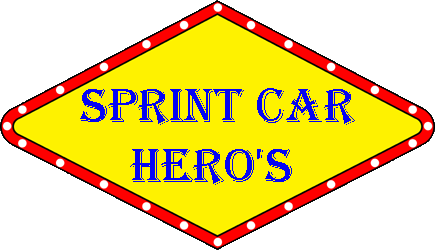



Howard at the Trophy Cup
Howard
Howard
Howards trusty bike
Howard on his bike
Howard autographing
Howard
Howard
Howard looking over a chassis
Howard
Howard
Howard known as the Campbell Comet
Howard with Rico Abreu
Howard in the pits
Howard admiring a model of his old Super
Howard in the dance contest after the Trophy Cup
Howard and his partner Marilyn won the contest
Howard cooking on a little BBQ grill
Howard enjoying a laugh
Howard and Brent
Howard and Brent
Howard waving to the crowd
Howard and Steve Kent
Howard with son Brent and a painting of his old super, with the guy who painted it
Howard with son Brent and Grandson Bud
Howard with Brent and Bud
GROUPS
Howard posing with a family
Howard, Brent, Bud and Tim
Howard, Brent, Bud and Tim
Howard, Brent, Bud and Tim
Howard with Brent, Tim and Bud with their helmets that were auctioned off to Rico Abreu and Kyle Larson for $ 25,000 for Make A Wish
Howard with Brent and the boys
Howard and the boys with an award
Howard and the boys again together
Howard and crew pose
Howard with Sandy, Bud and Brent
Howard with Brent and Bud
Howard with Jimmy Sills, Leroy Van Connett, Jimmy Boyd and Bob Miller
Howard posing
Howard and Buddy Kofoid the 2017 Howard Kaeding Classic
Howard with Trophy Dave and his two granddaughters at the Trophy Cup
Howard driving the Traguerio Brothers car at Madera 1972
Howard with the trophy girl
Howard with # 1x and a trophy girl
A young Howard with an early racecar
Howard with # 61 after winning the main at Kearney Bowl
Howard after winning a big trophy
Howard with grandson Bud after the youngster won the Howard Kaeding Classic
Howard with a trophy girl
Howard
Howard and his ride from his driving days
Howard with his car and Kyle Larson
Howard with his old super
Howard with his car
Howard showing Kyle Larson the model of his old super
Kyle Larson in Howard's car
Howard's old car on display
Another view
Howard with # 61
Howard with # 3
Howard with his car and waving to the crowd
# 3 1970
# 3 lined up
# 1x Howard bailing out
# 3 Howard with Steve and Kim Lafond
Howard interviewed
Howard and Mark Sargent
Howard with Rick Goudy
Howard looking over a couple of his old rides
Howard acknowledging the crowd
Howard with his ride back in the day
Howard and an old announcer Kenny
Howard giving the flag back after taking a solo lap for his brother who was buried that day
Howard 1972 in his car
Howard opening day 1972 at San Jose
# 1 ready to push off
# 1x
# 3
# 3
# 3
# 3 ready to fire up
Howard in # 1x
Howard in # 1x
Howard in # 3
Howard in # 3
Howard in # 3
Howard running inside his son
Howard's fan card
That painting is available on the internet
Those 4 expensive helmets on loan from Rico and Kyle who donated the money
Poster
Howard's t-shirt
A poster for a car show and BBQ
This poster announced the HK Classic
A nice drawing
The Kaeding Dynasty
Art
Howard's many Cars
Howard at San Jose 1972
# 1
Howard's restored Super 1x
Look whos in the car now...Photographer Steve Lafond
# 1x
# 1x
# 3
# 3
# 3 on display
# 1 Traguerio Brothers car
# 3 in is old Super
# 3
# 3
# 3
# 3
# 3
# 3
# 3
# 68
# 69
# 69 biking it
Howard passing Nick Rescino for the win at San Jose Podium
# 1x
# 1x restored
# 69 on the outside of # 44
Howard, left, battles Gary Patterson
# 1x Howard
# 1x Howard with Mark Sargent
# 3 and Nick Rescino fighting it out
# 1x passing # 42
# 3 against Johnny Brazil
# 61
# 69 racing Mike Sargent
# 8
Howard with the front end folded Uh oh.............
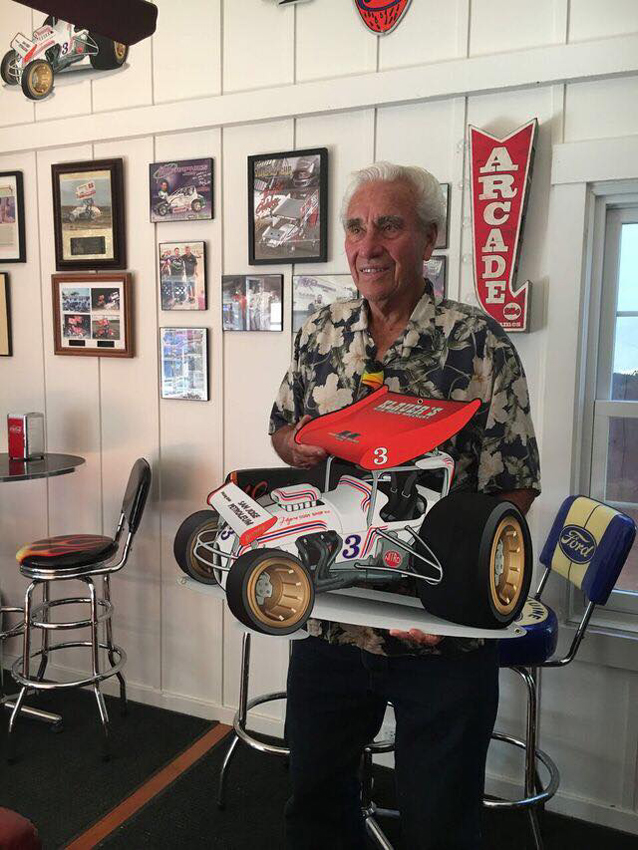
Howard Kaeding 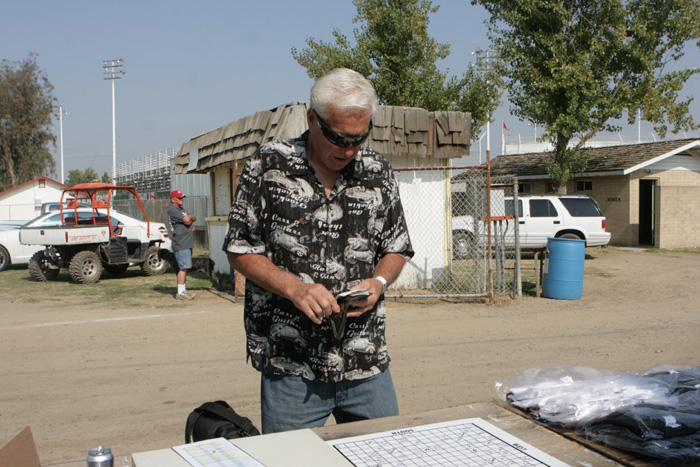
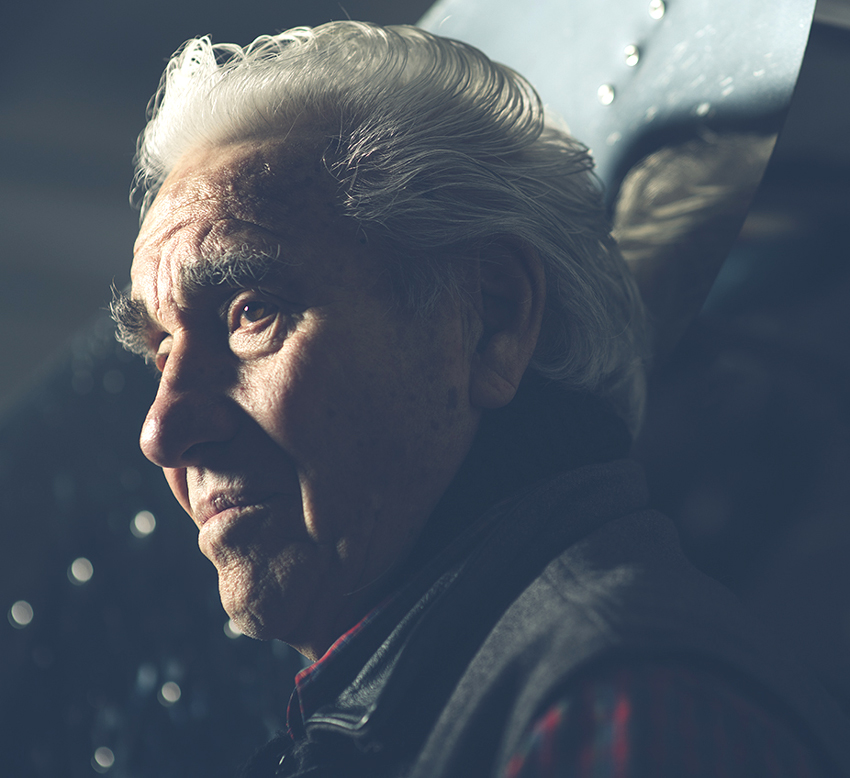
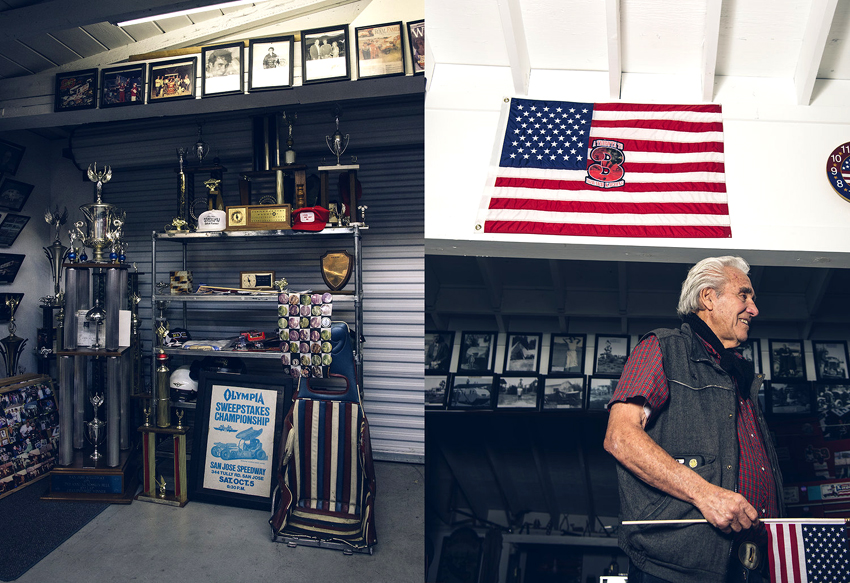
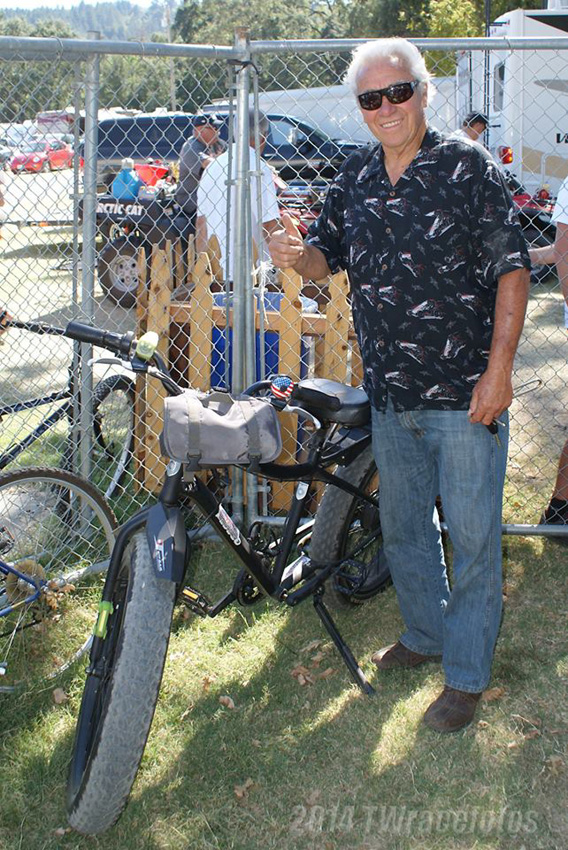
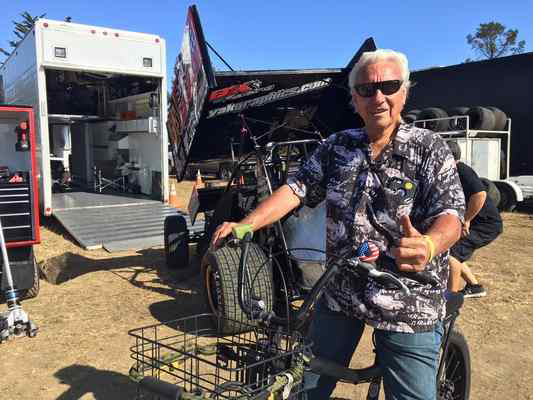
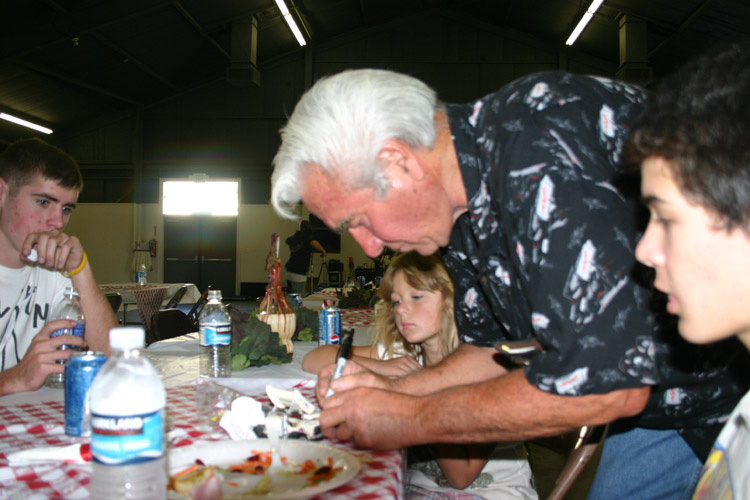
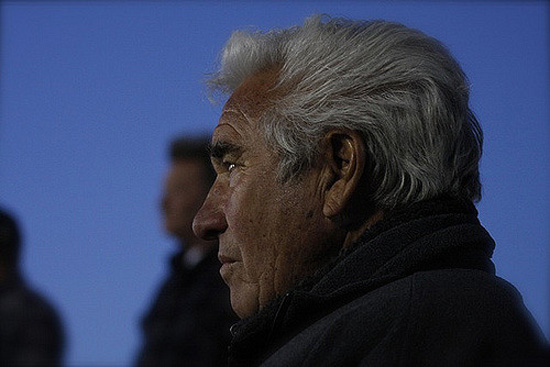
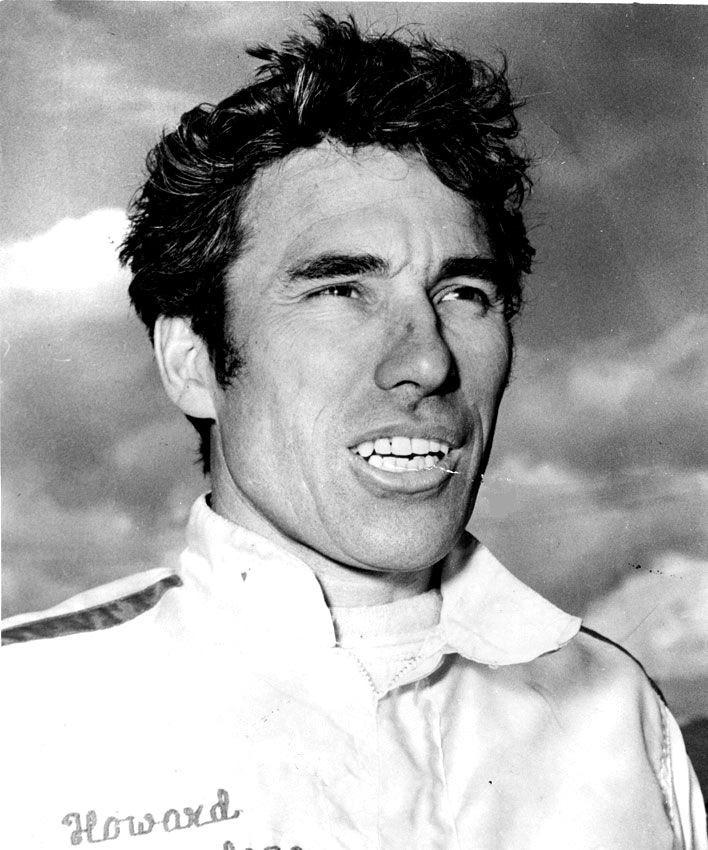
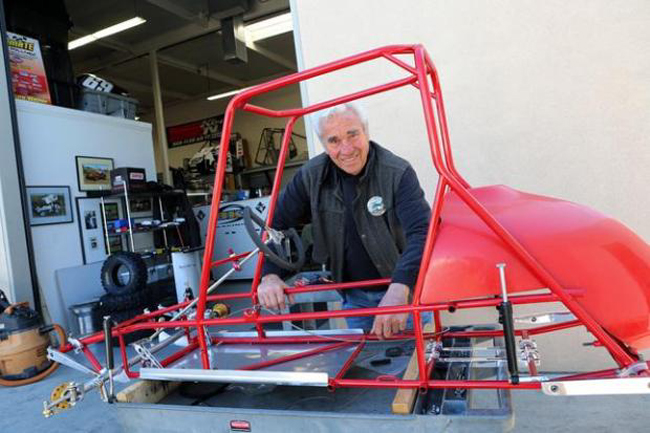
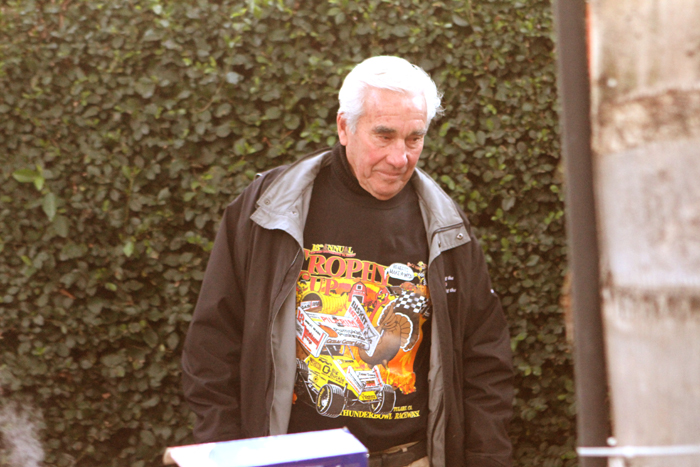
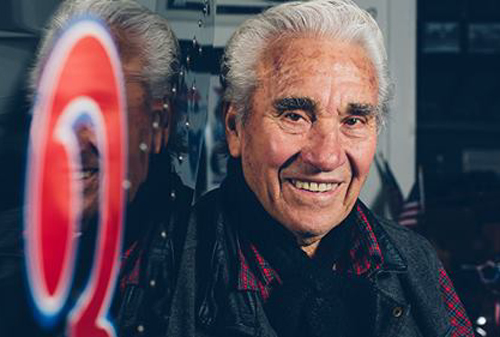
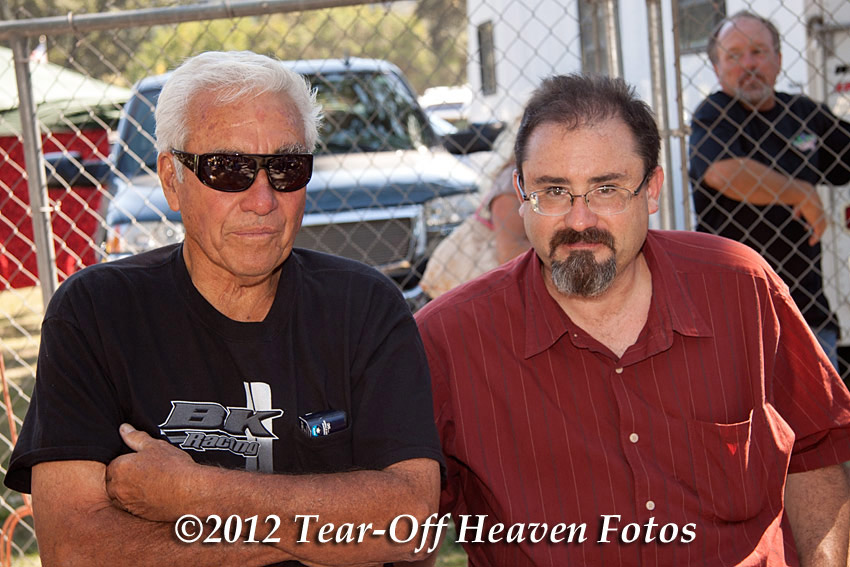
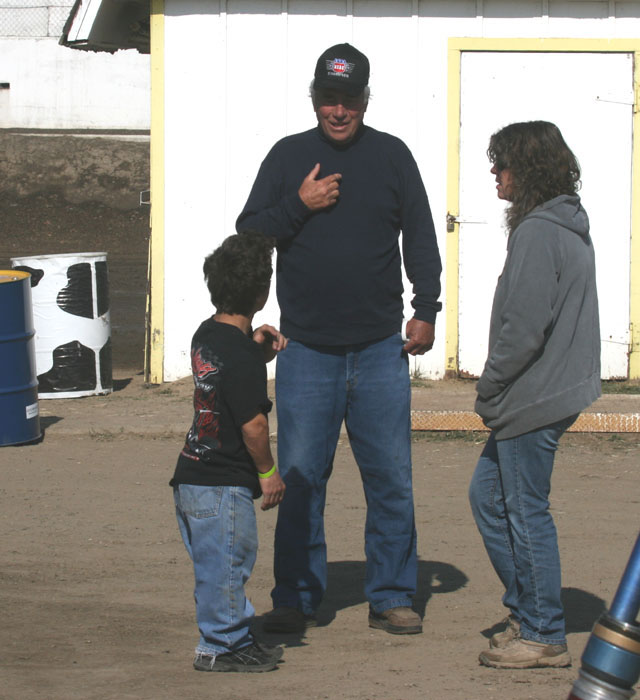
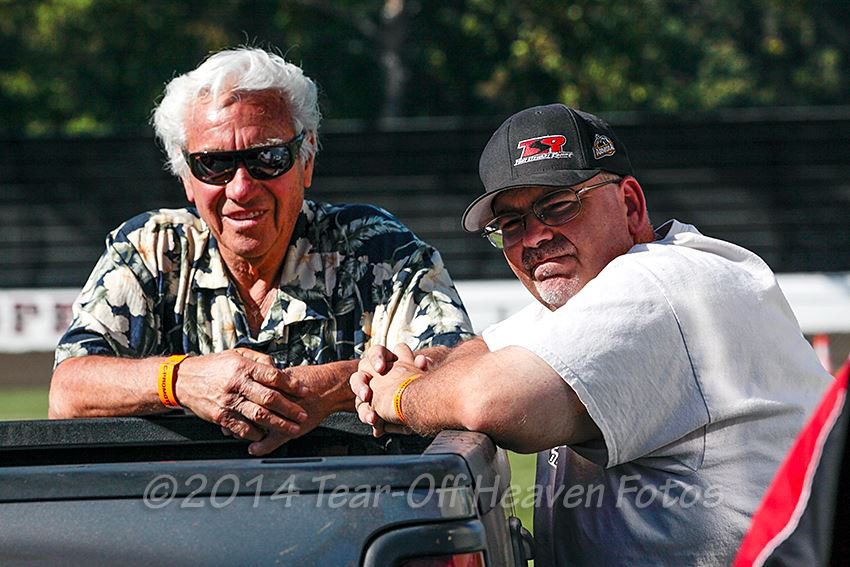
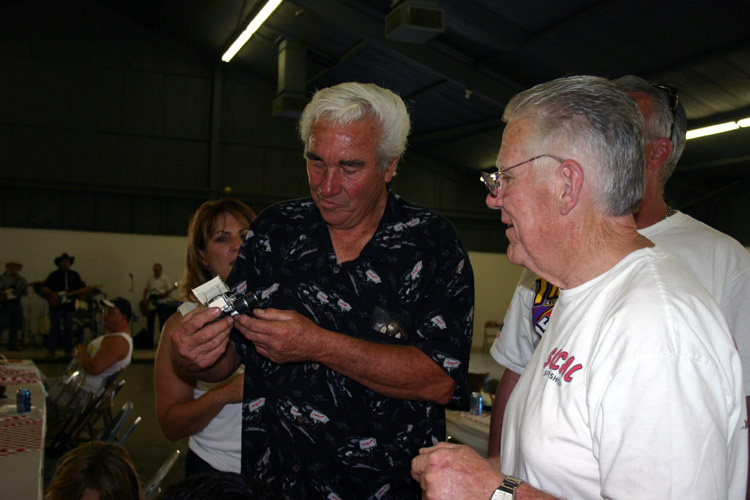
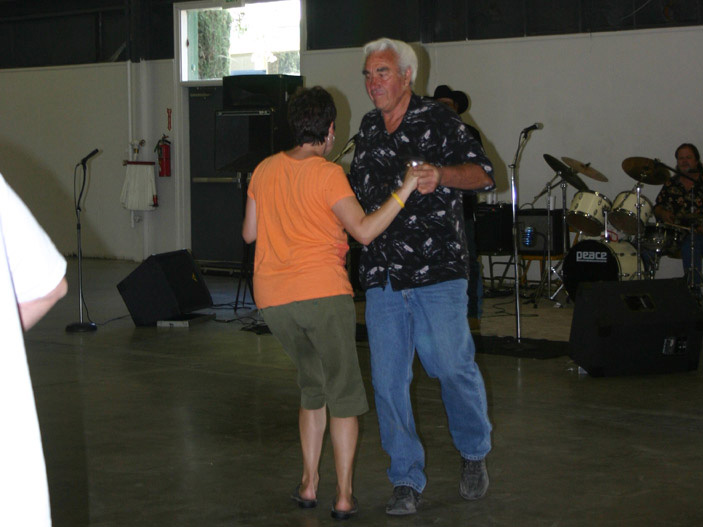
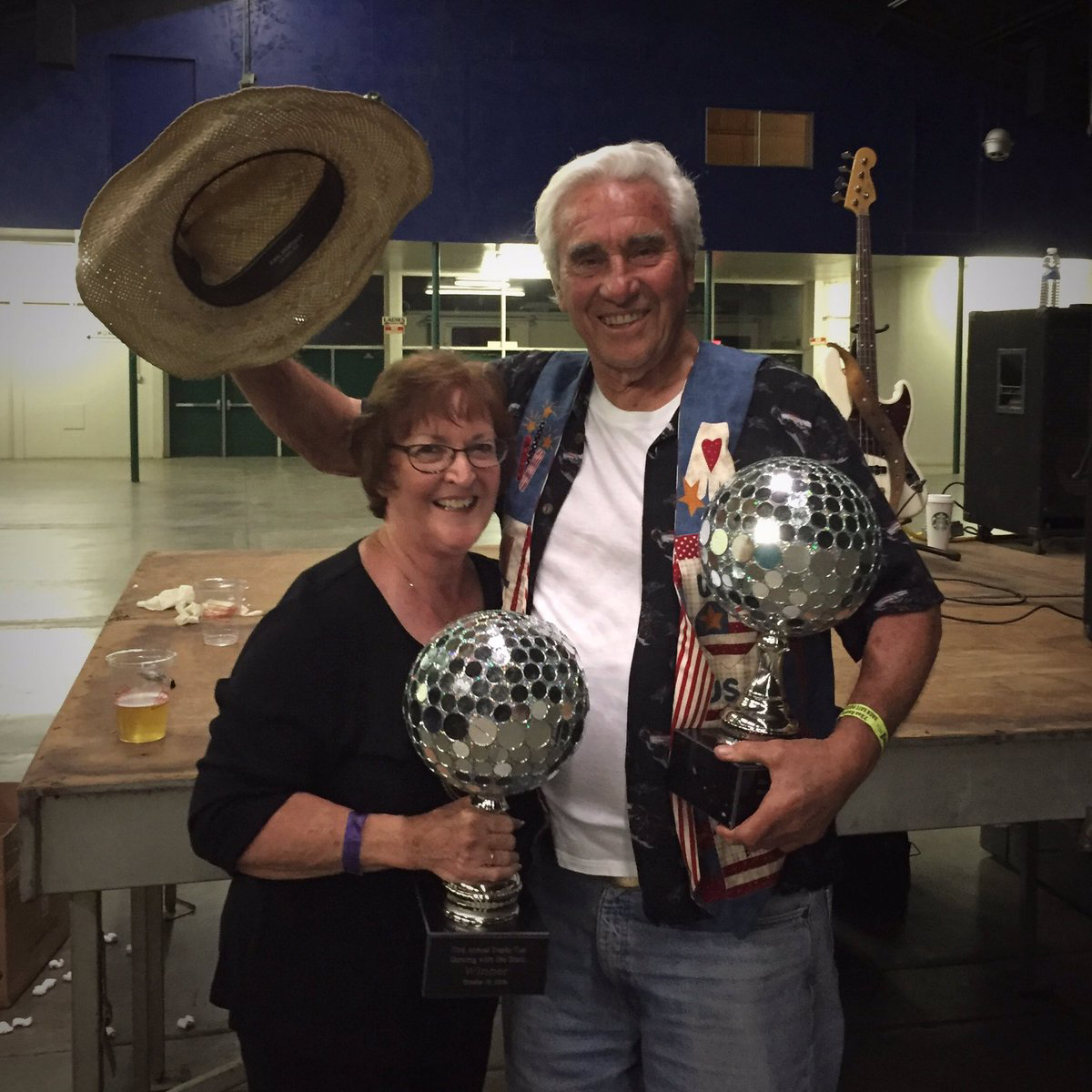
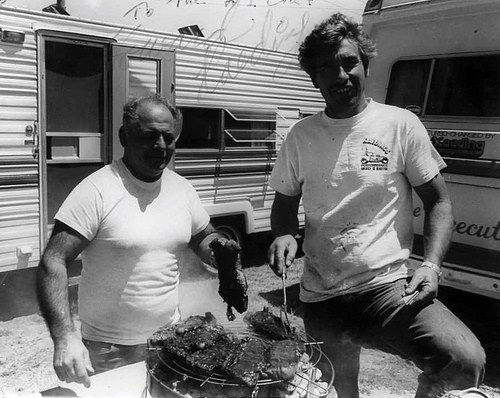
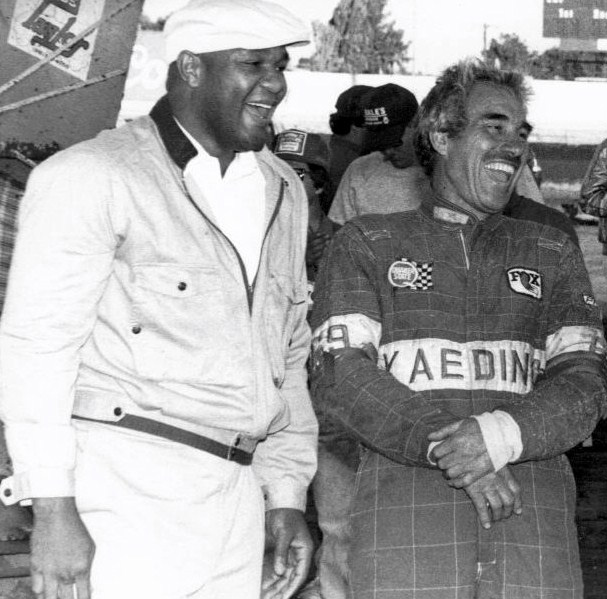
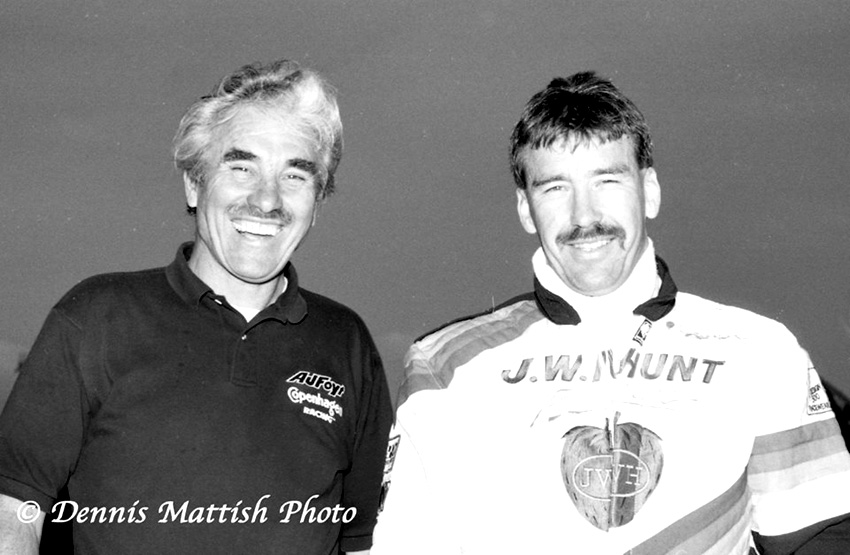
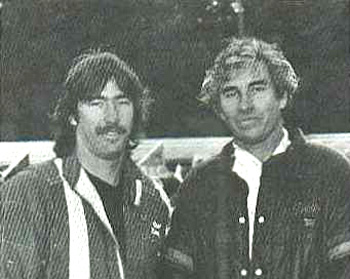
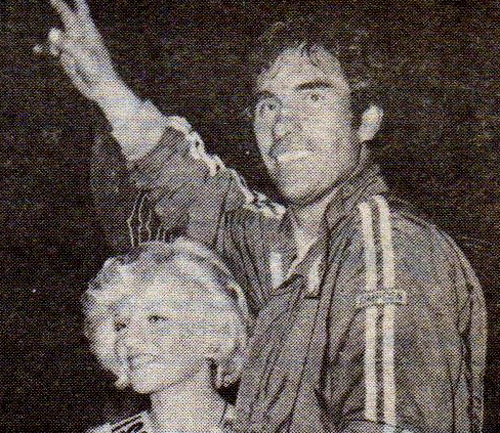
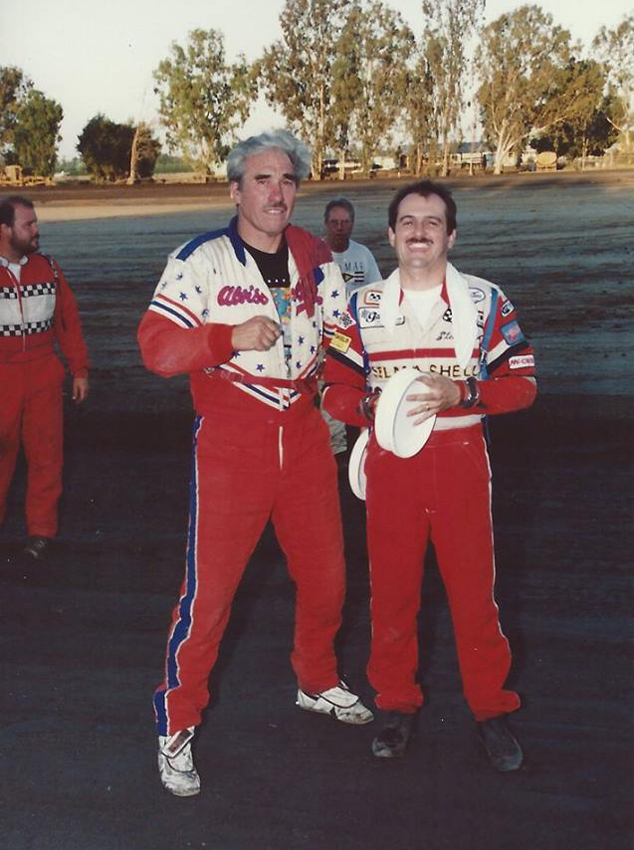
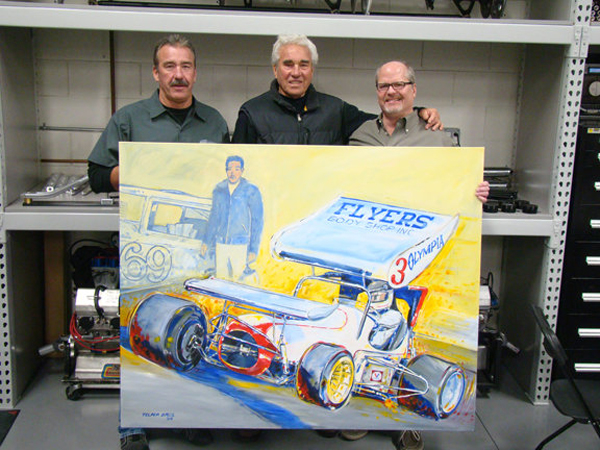
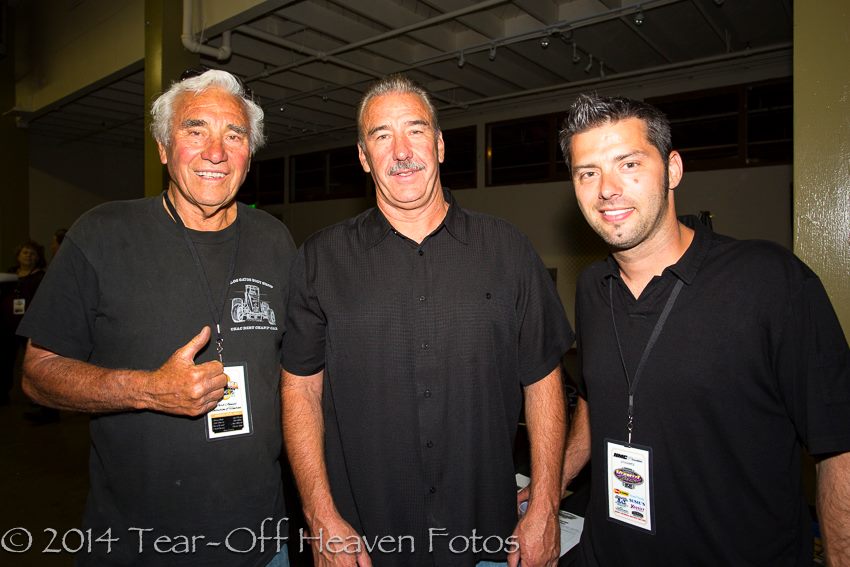
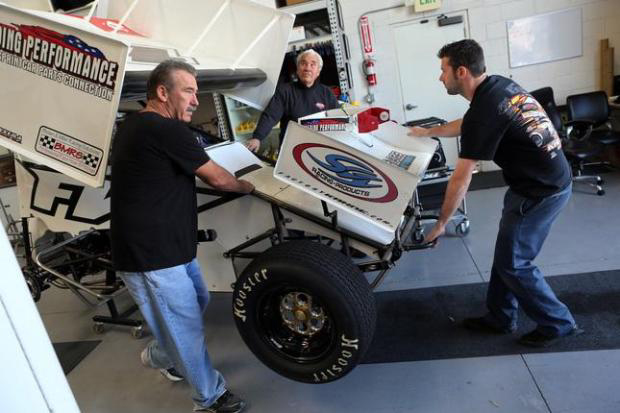
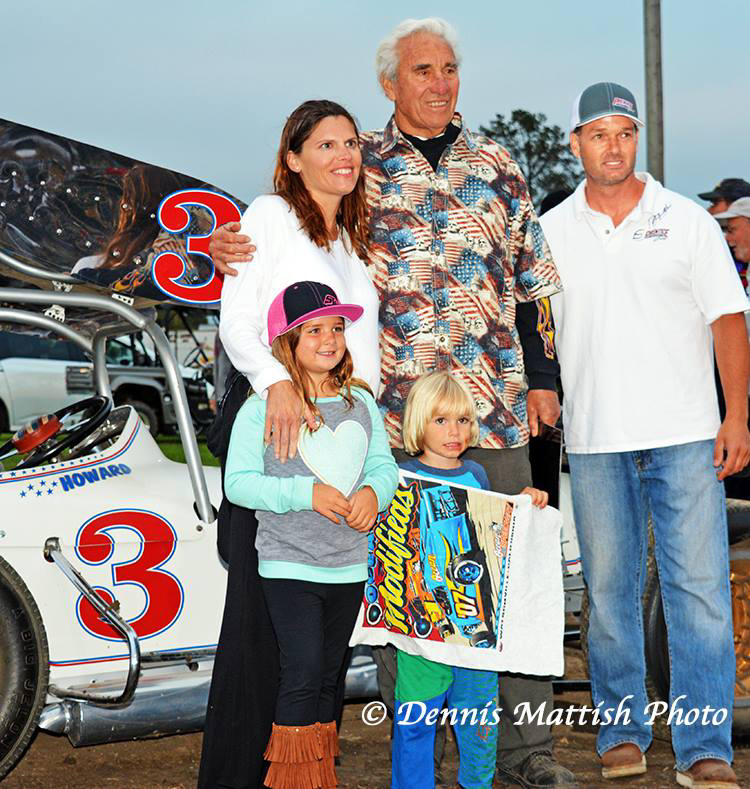
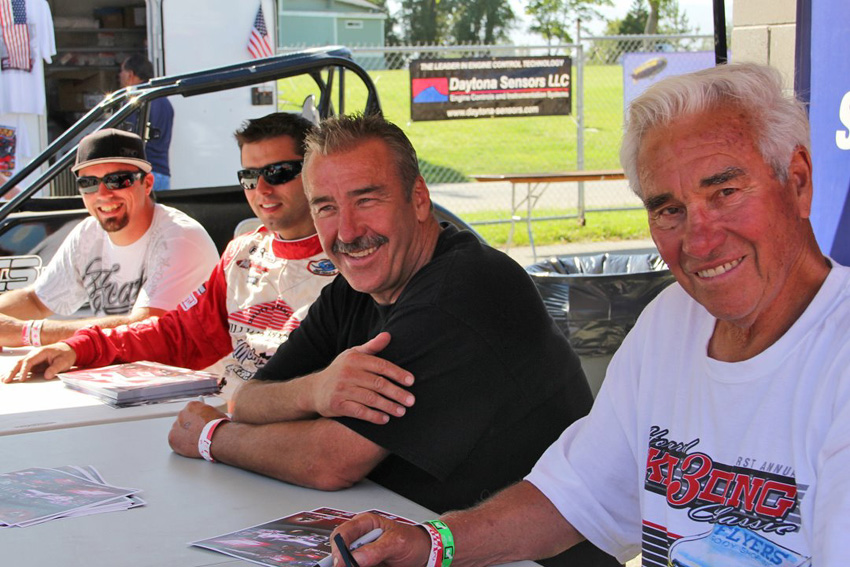
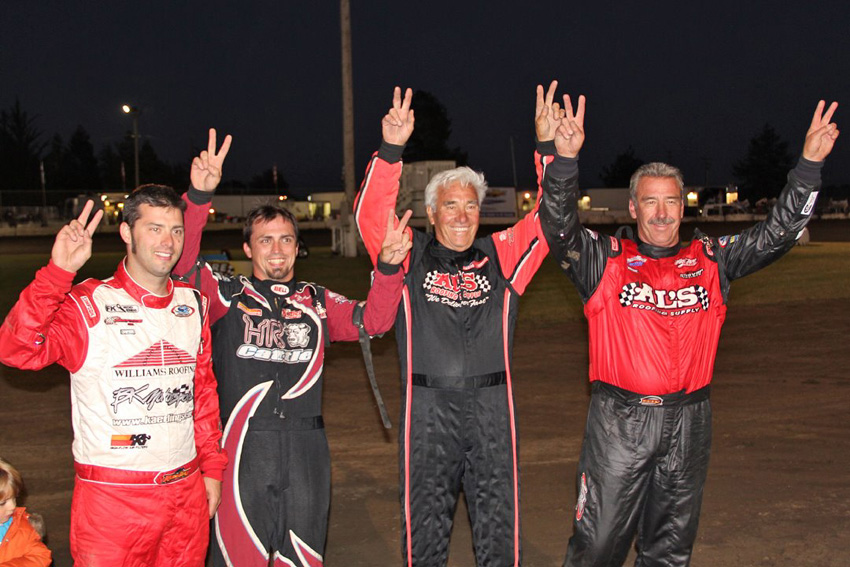
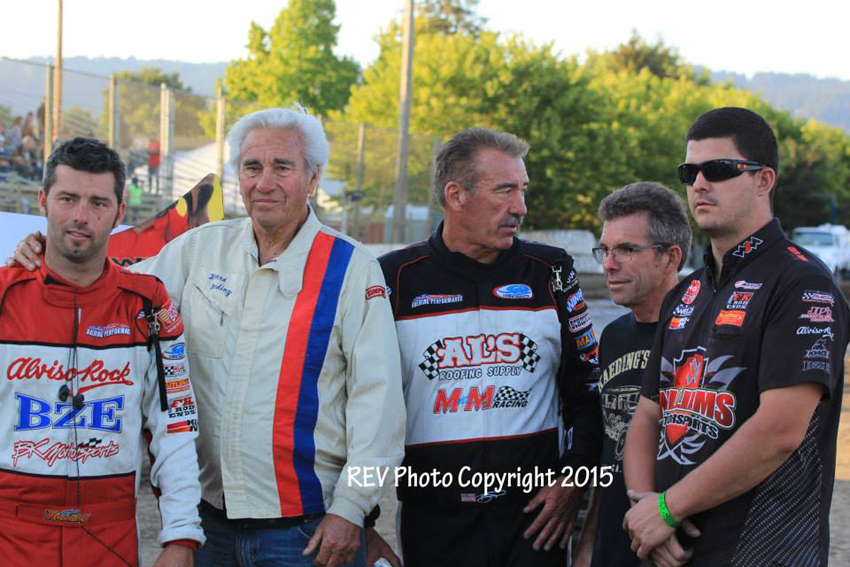
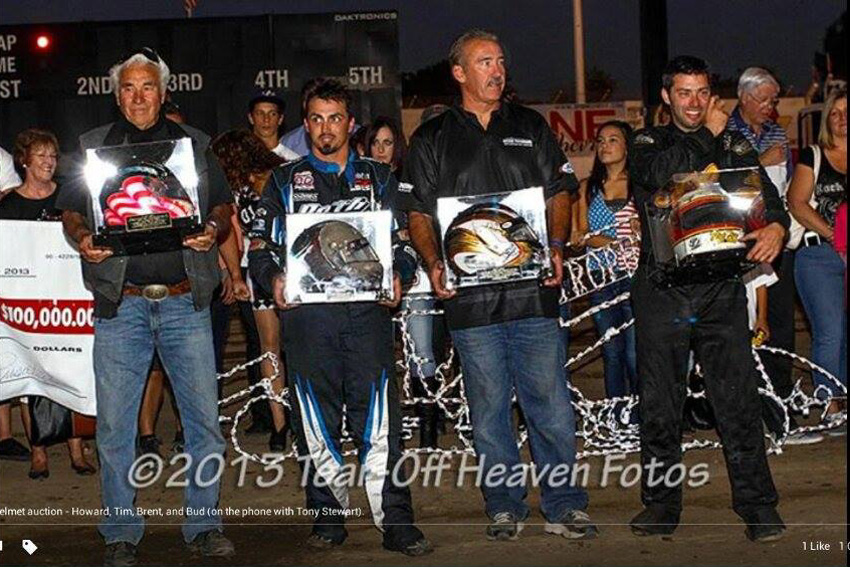
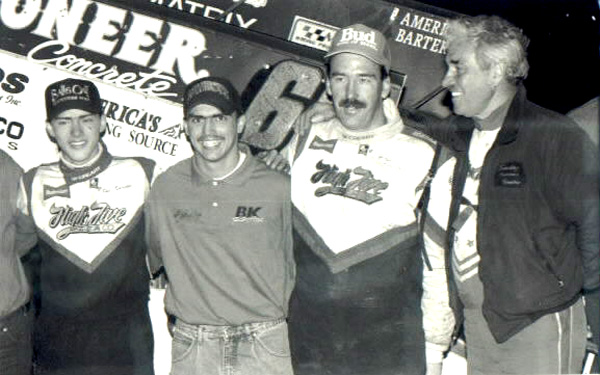
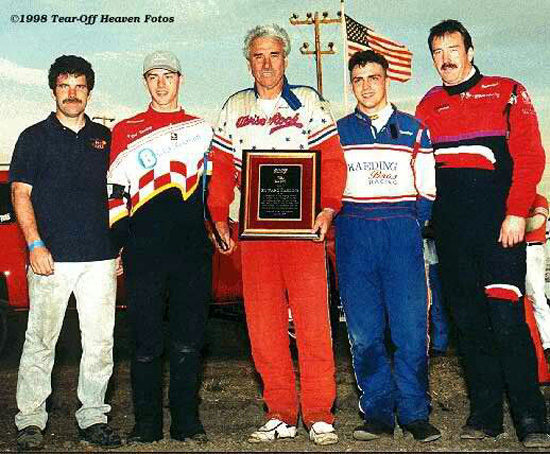
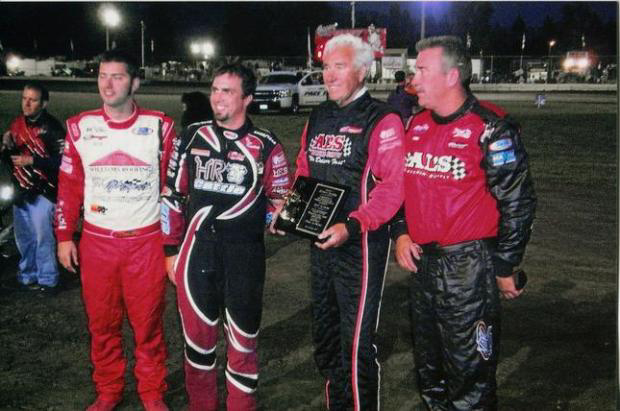
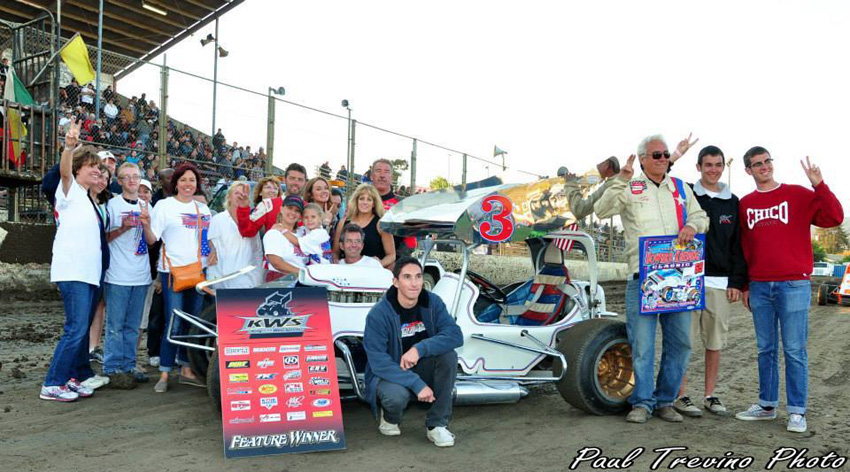
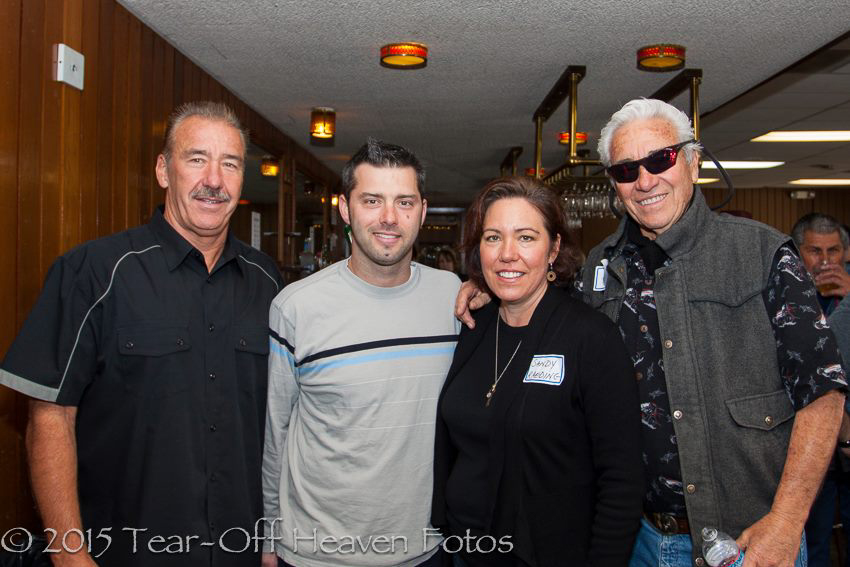
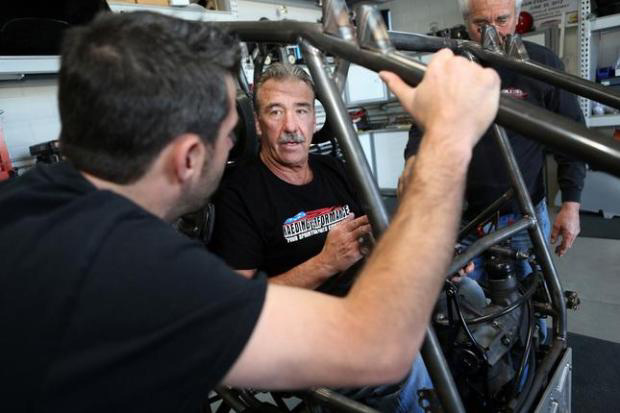
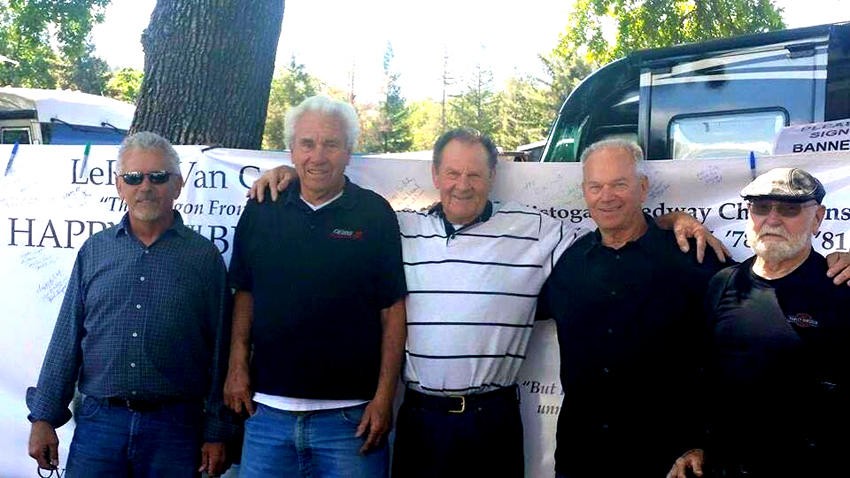
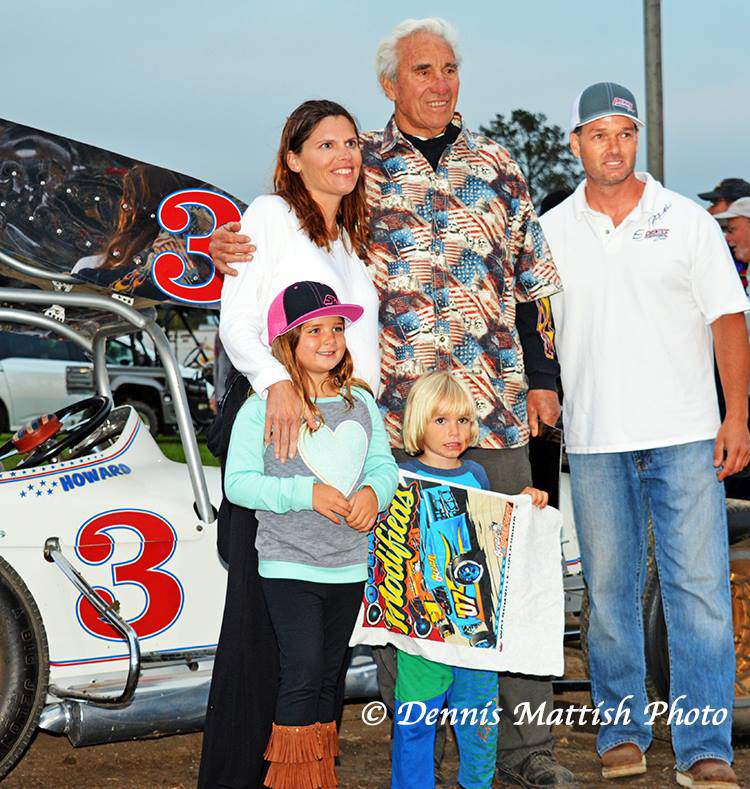
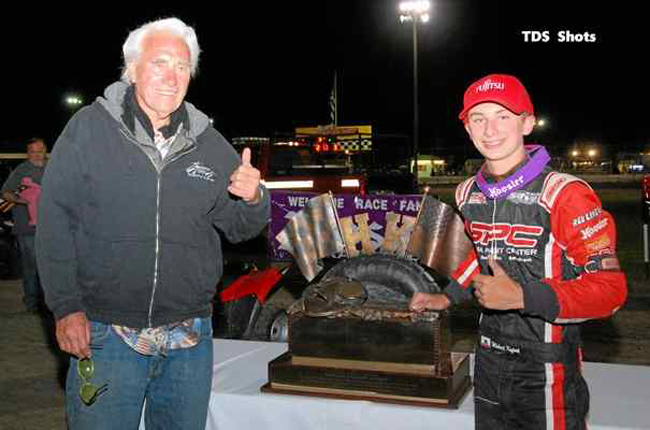
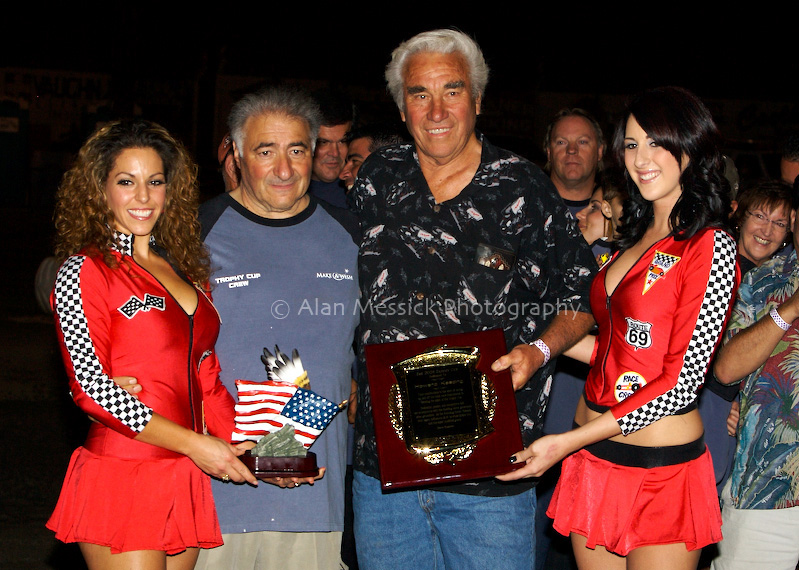
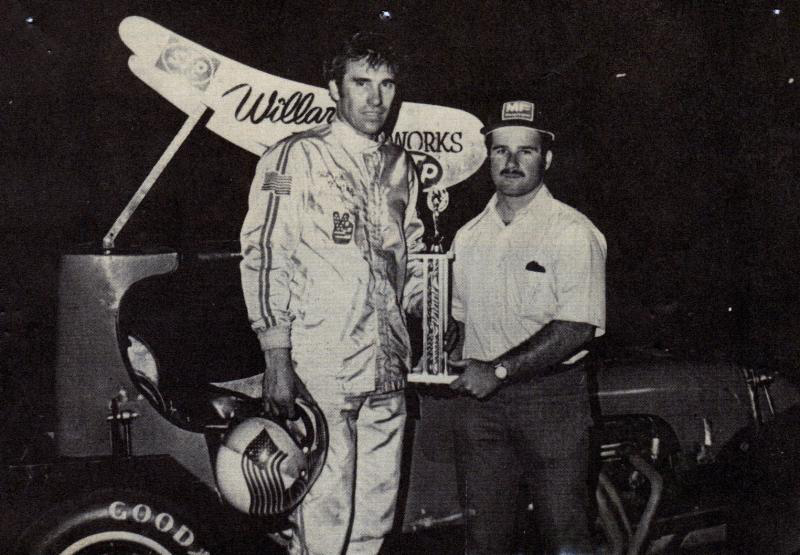
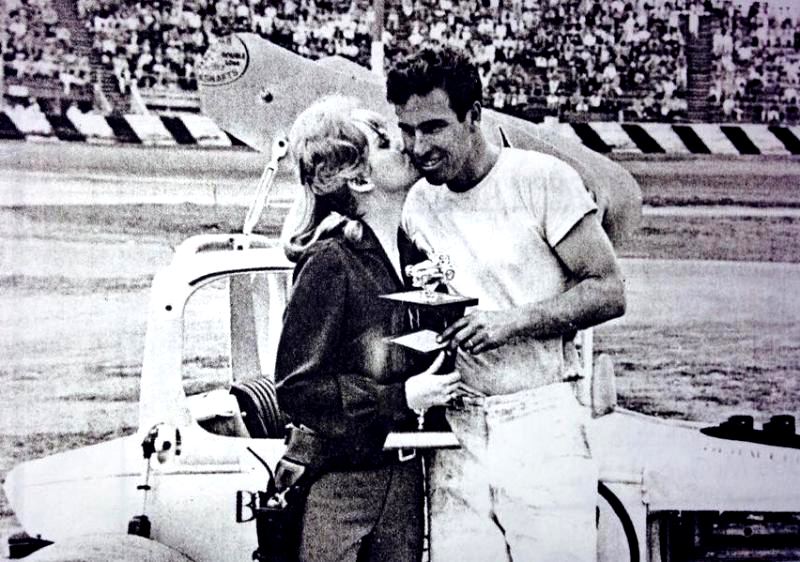
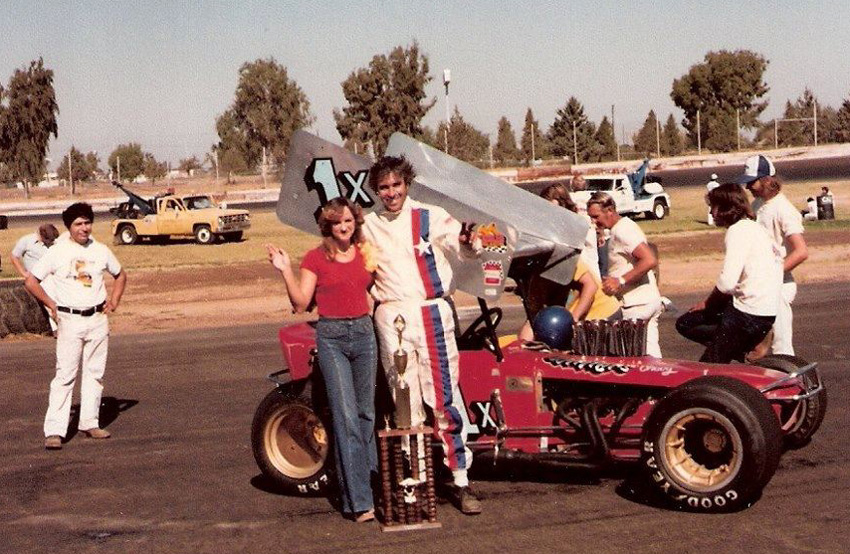
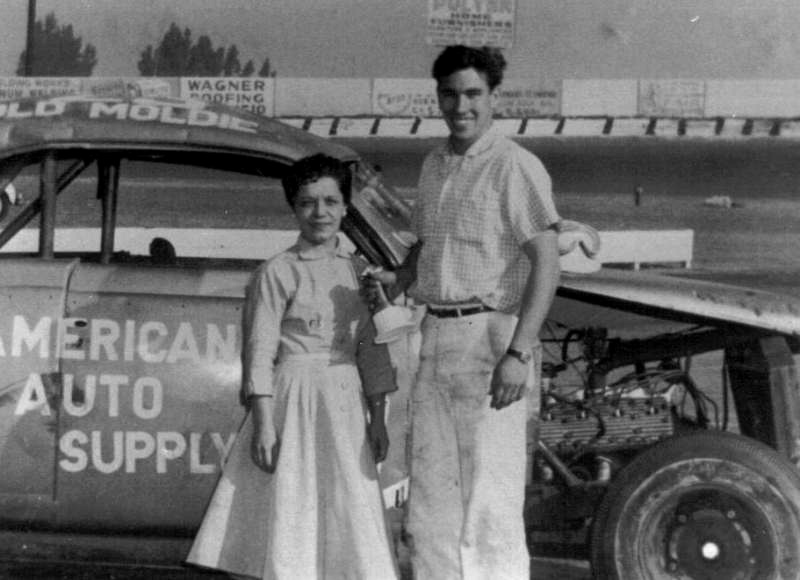
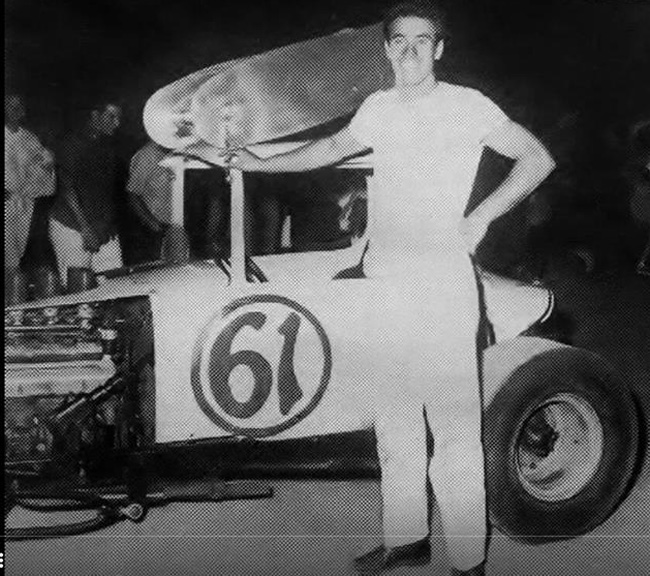
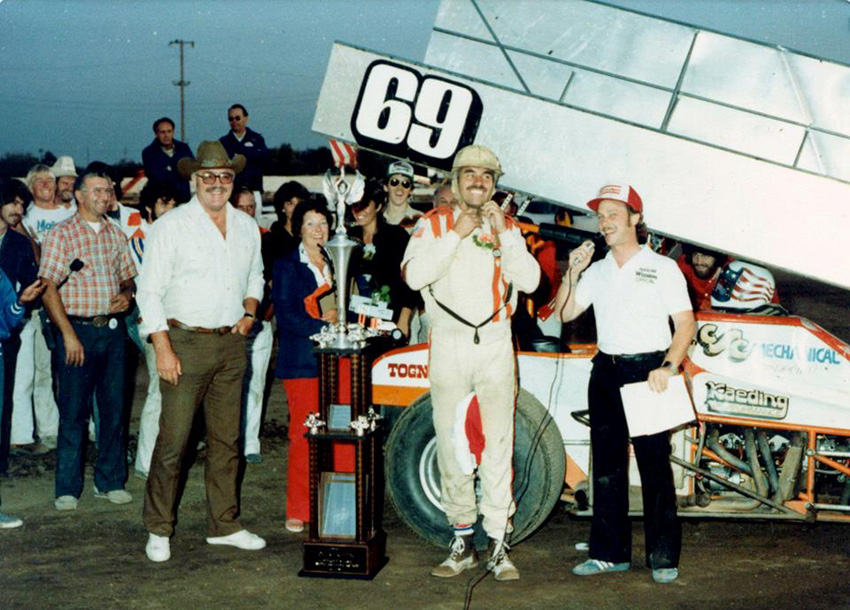
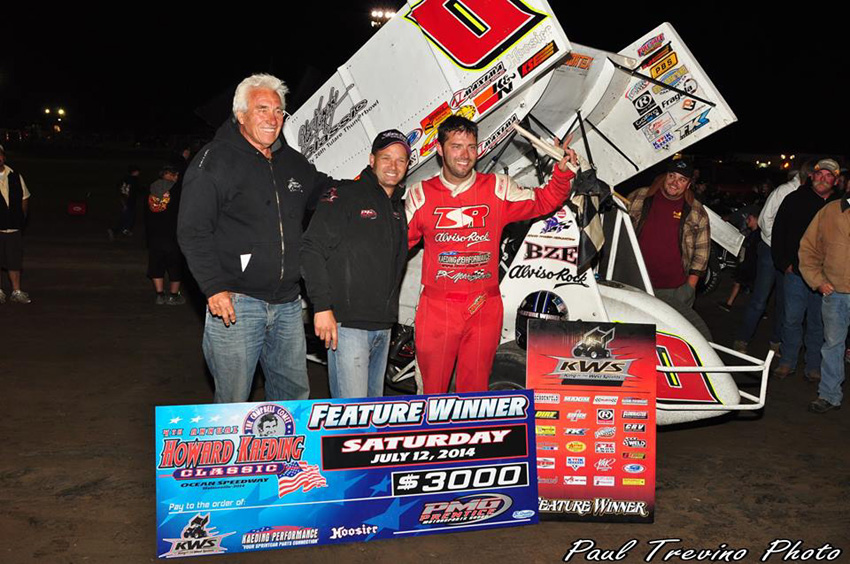
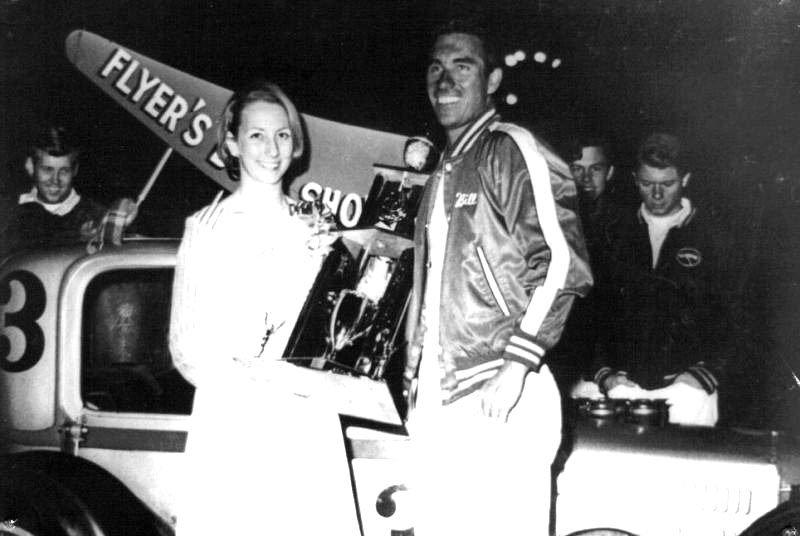
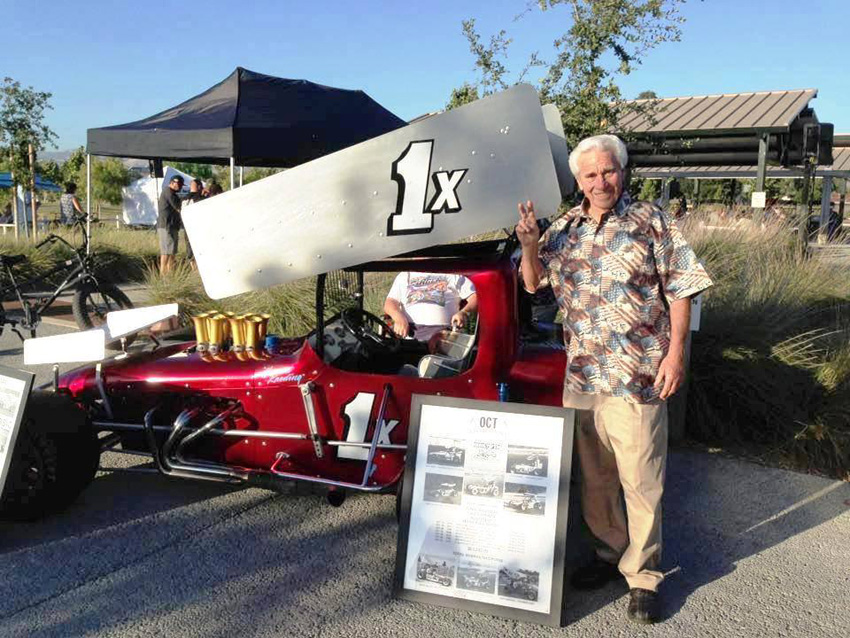
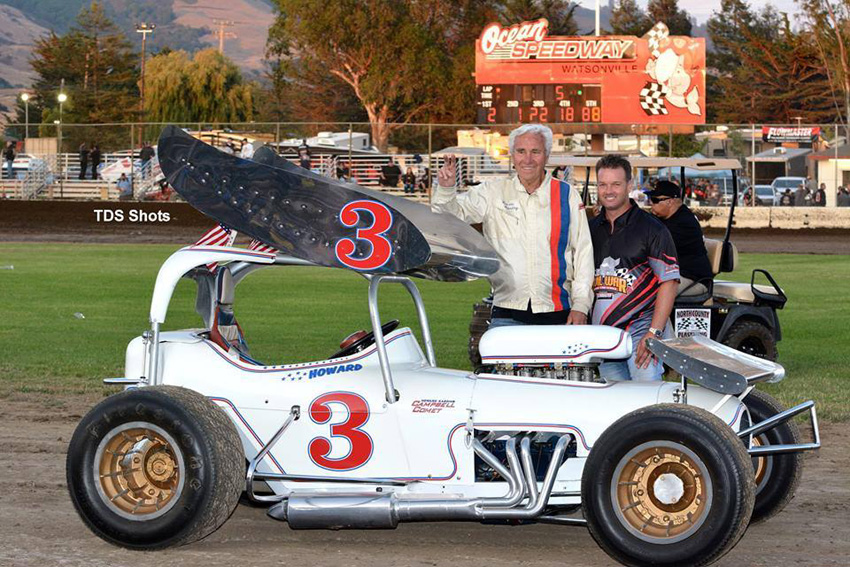

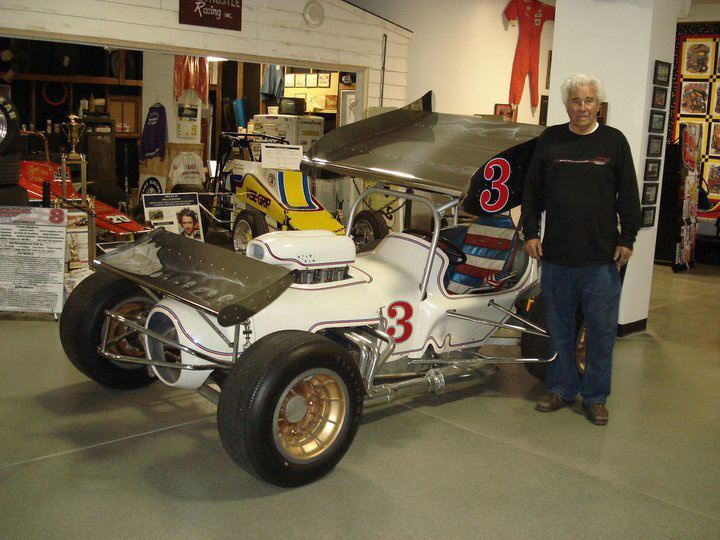
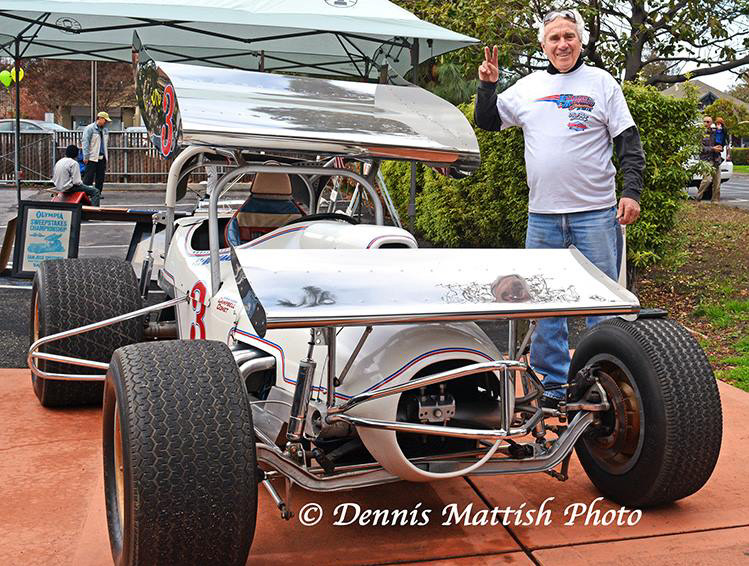
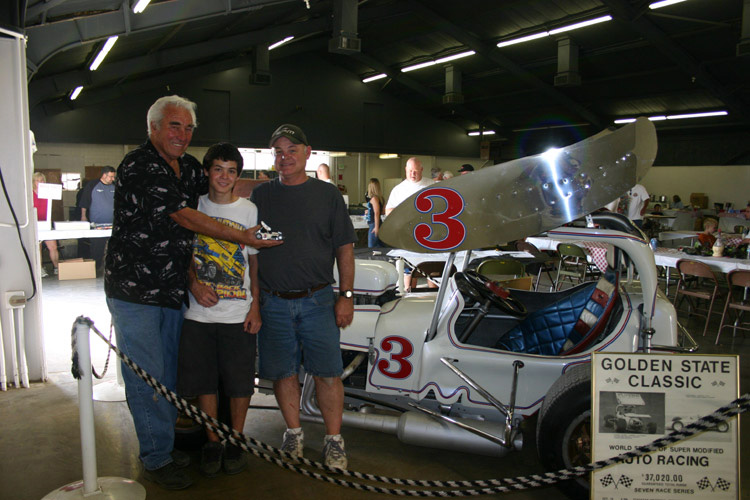
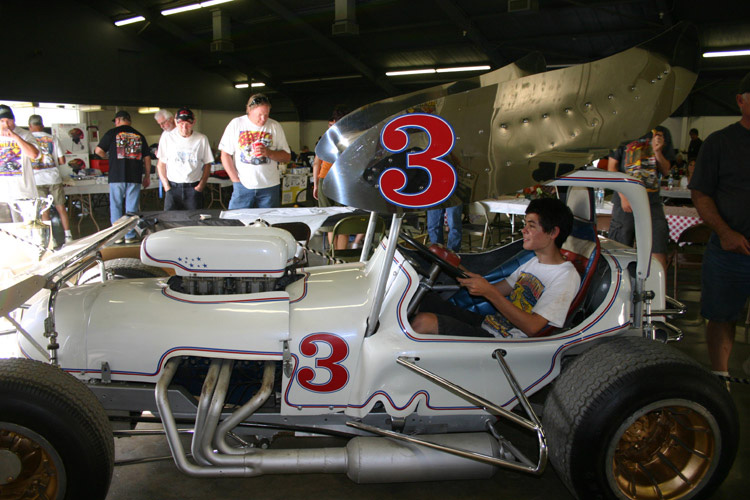
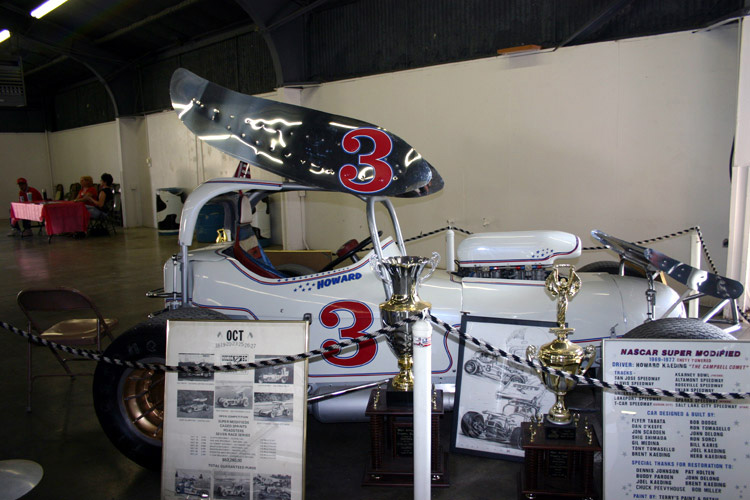
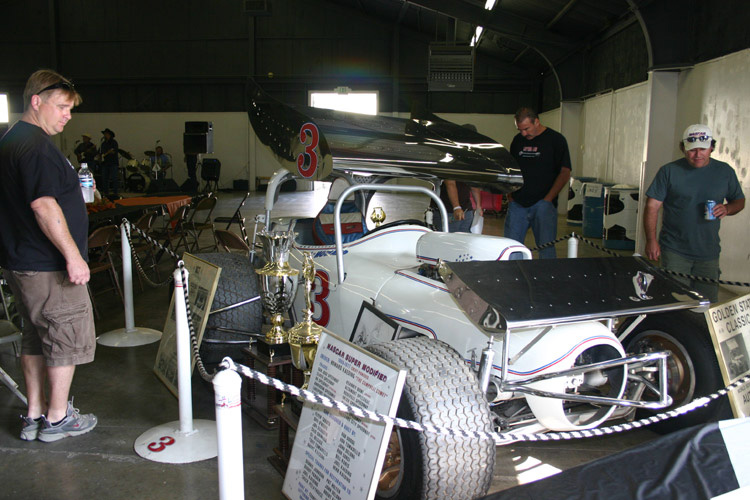
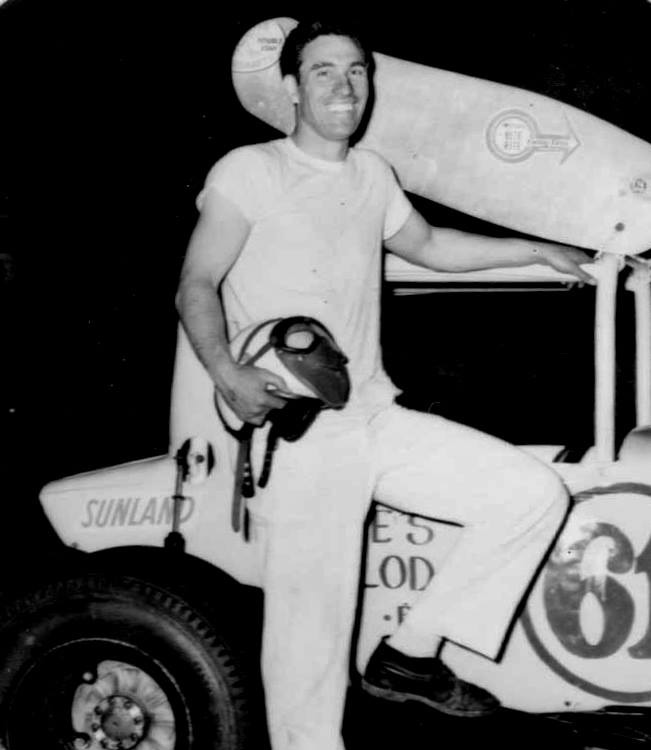
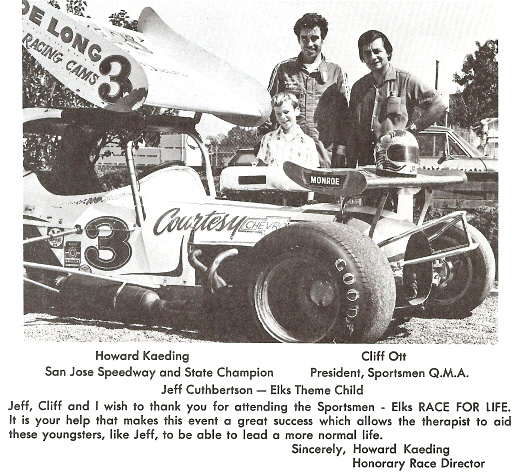
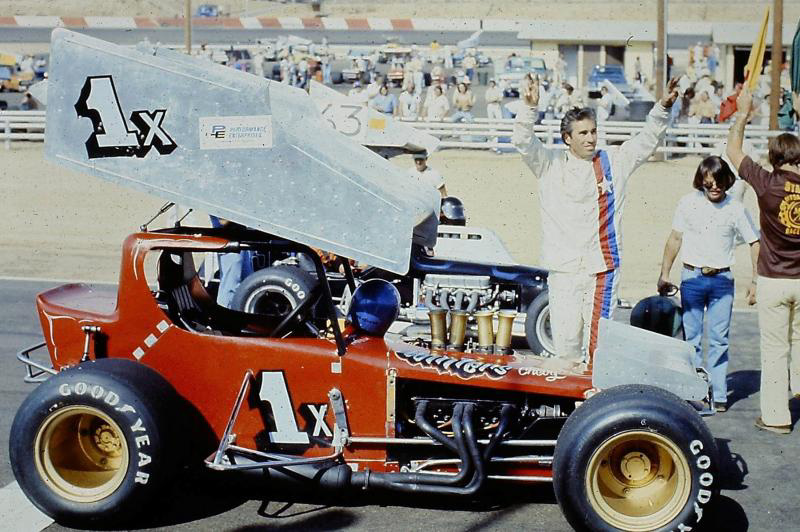
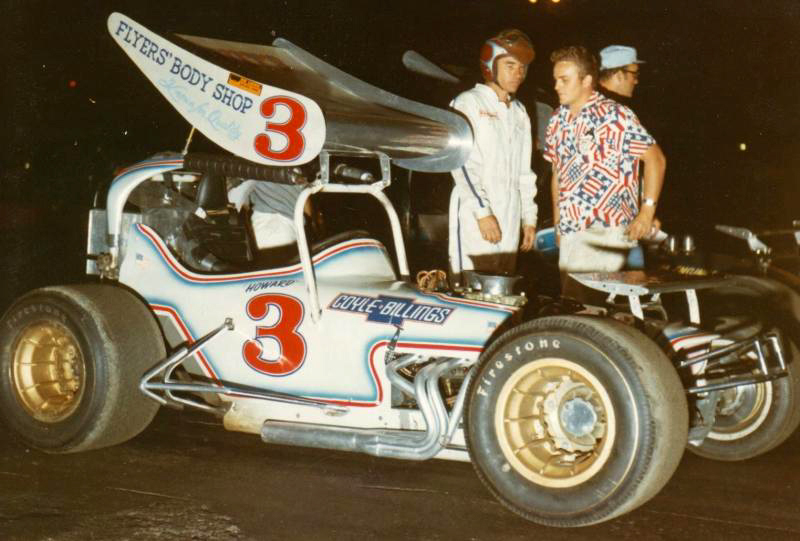
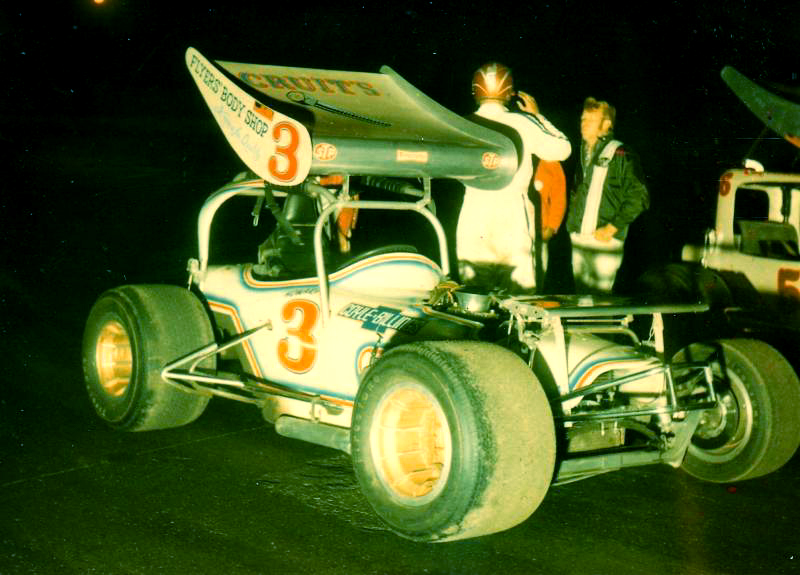
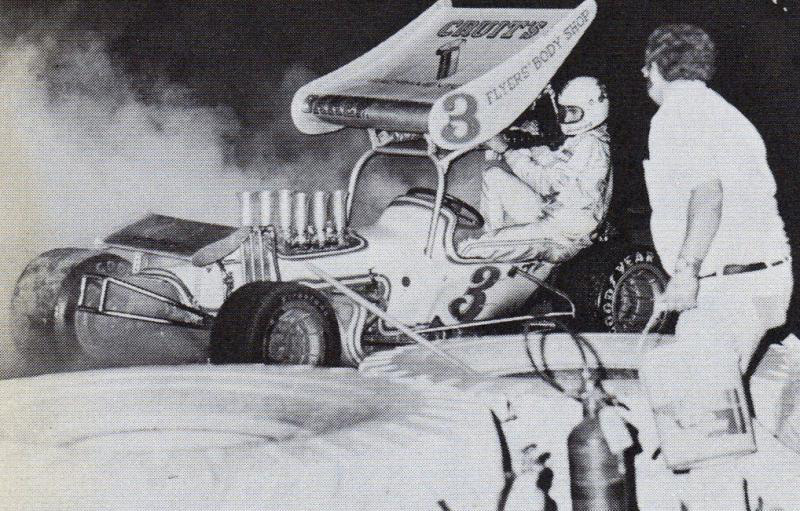
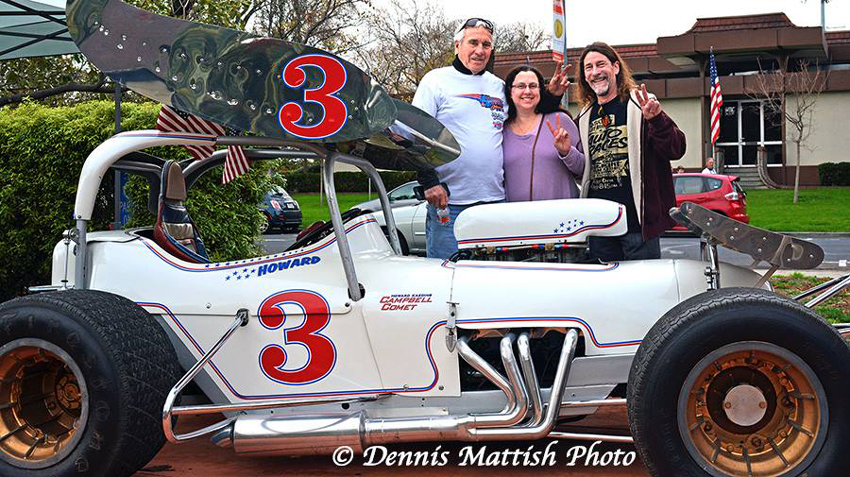
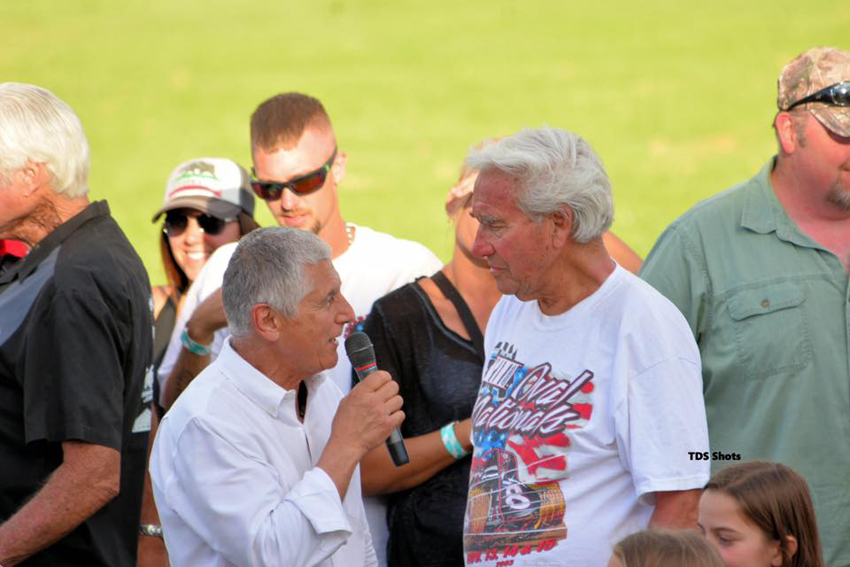
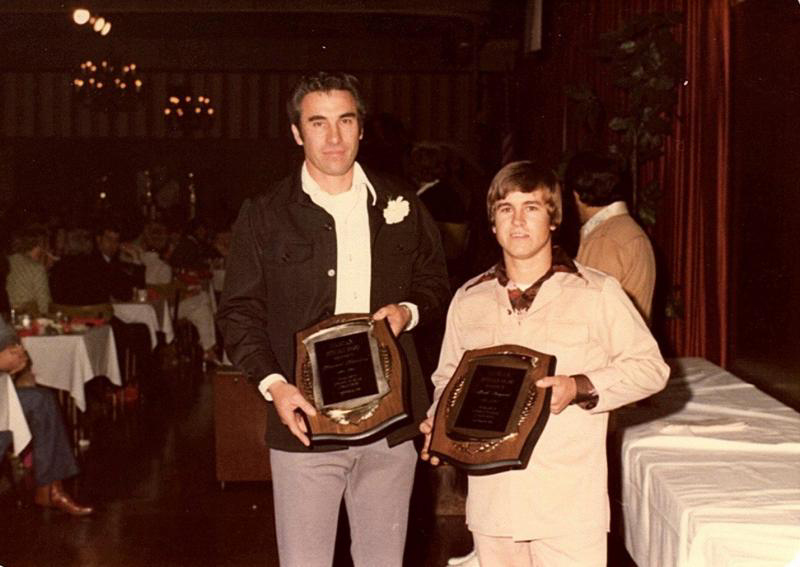
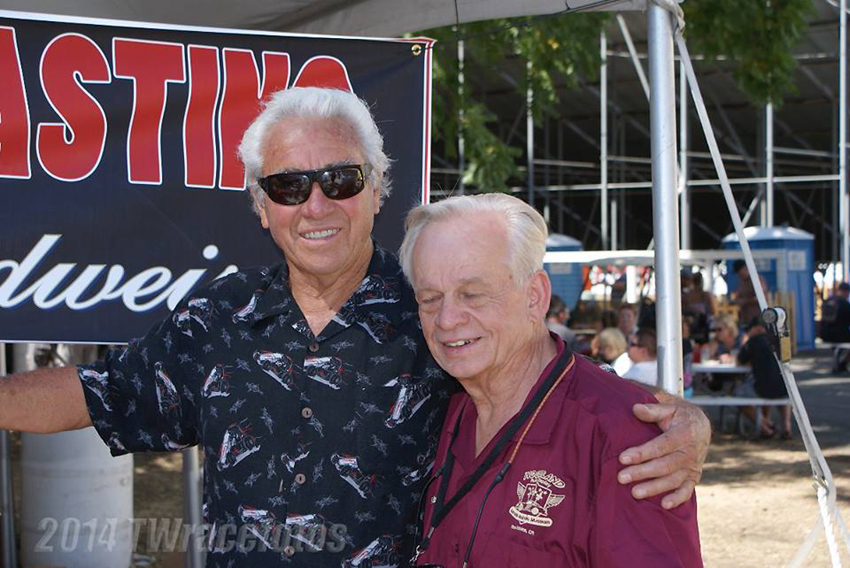
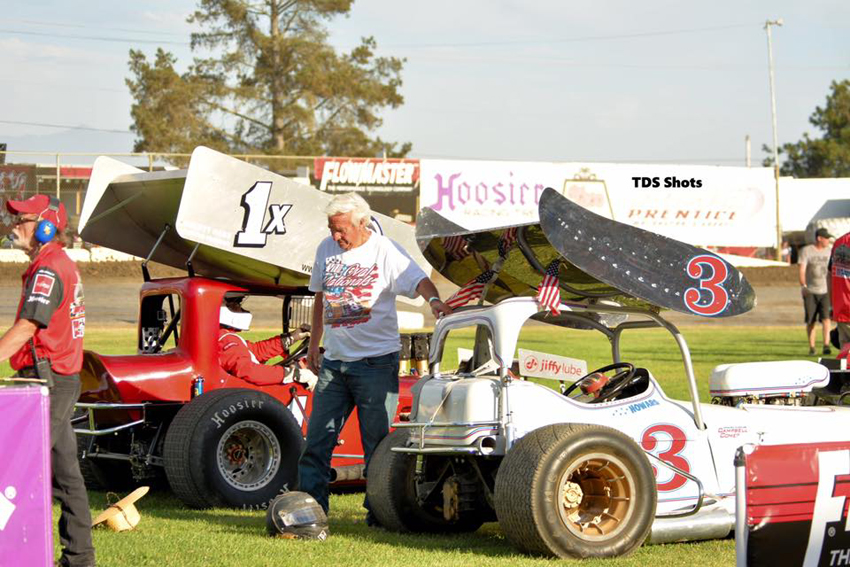
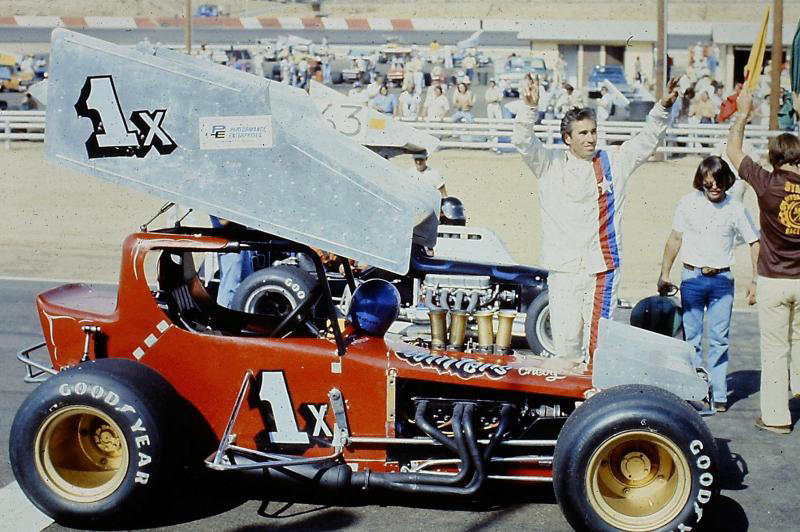
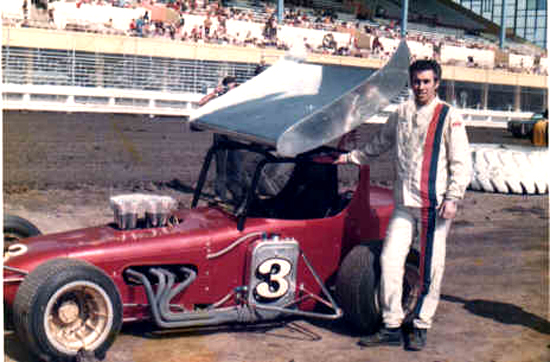
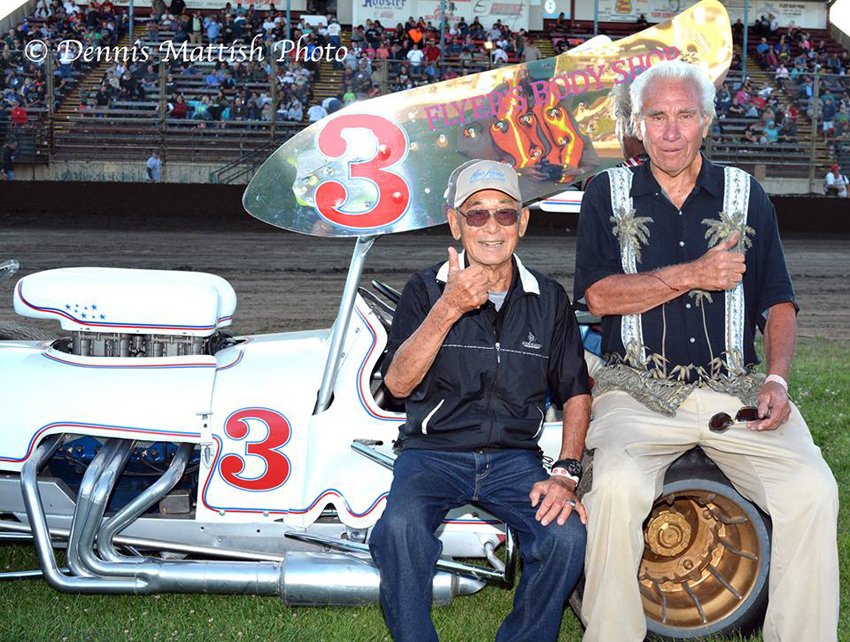
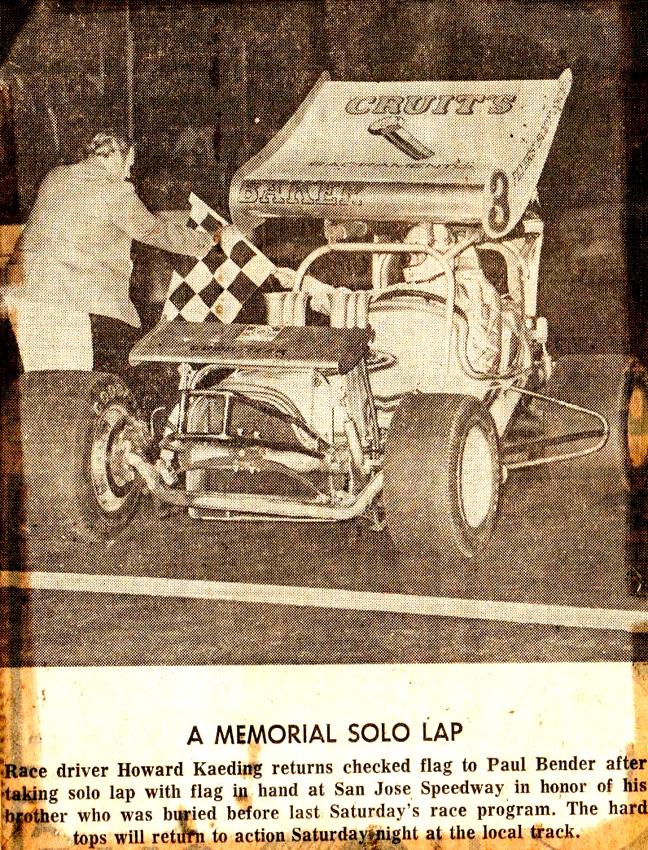
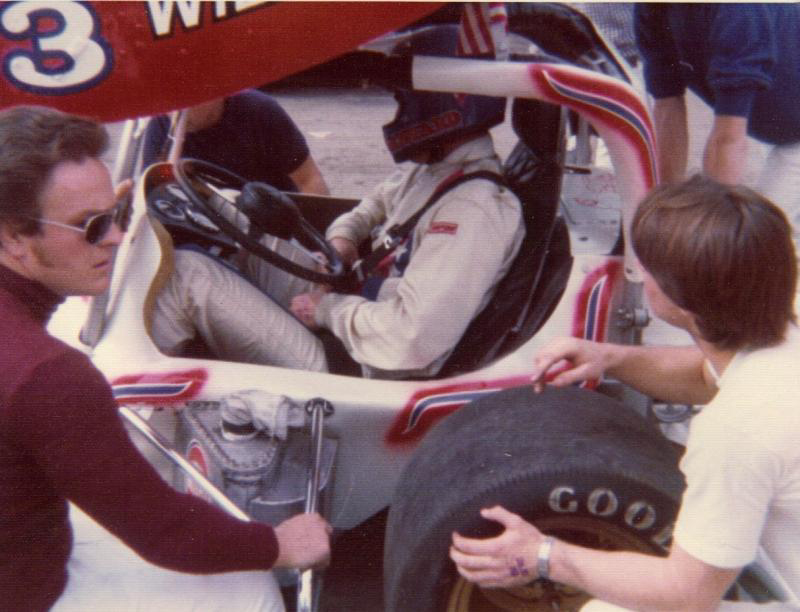
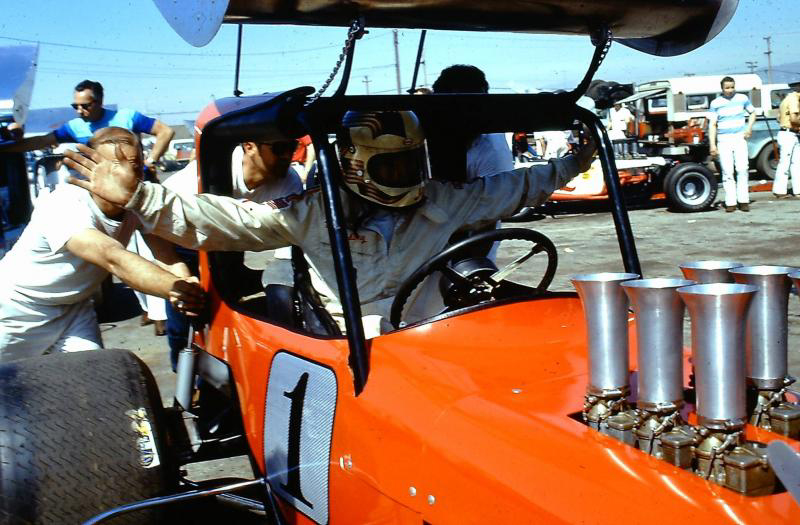
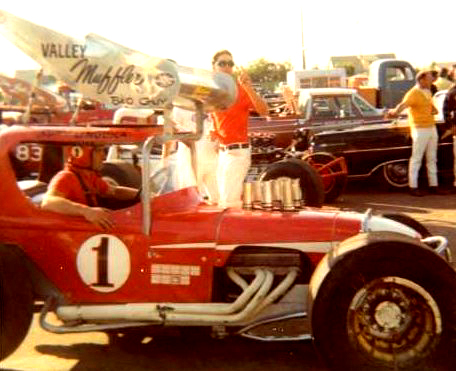
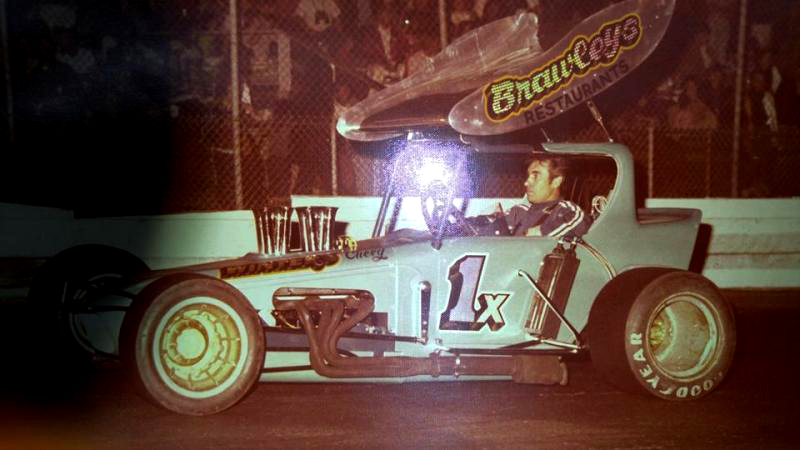
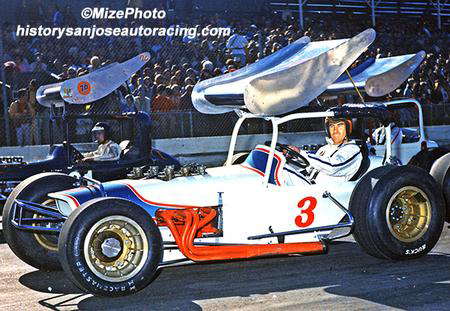
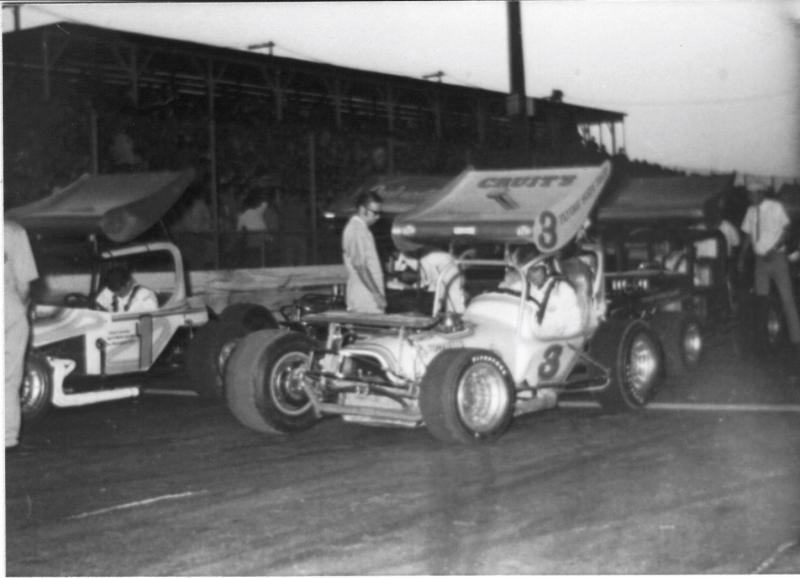
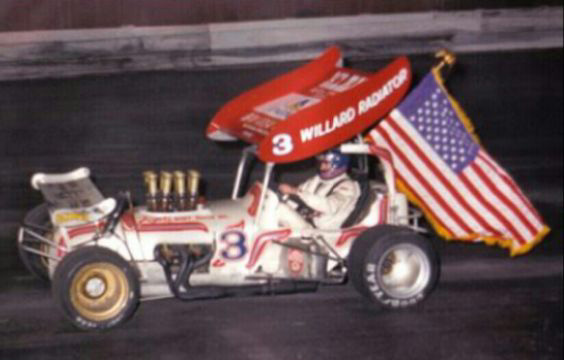
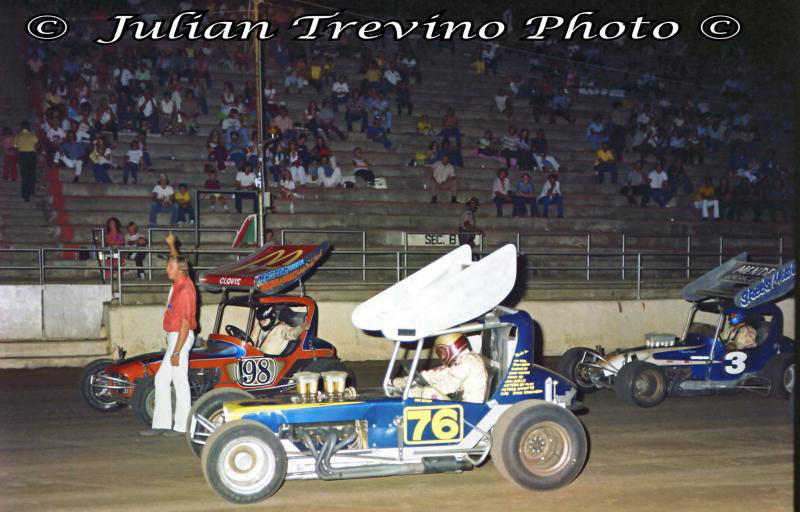
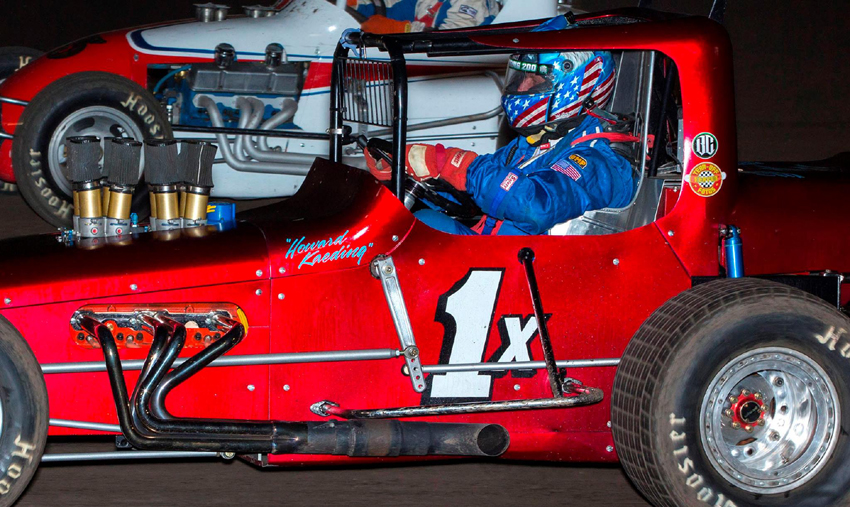
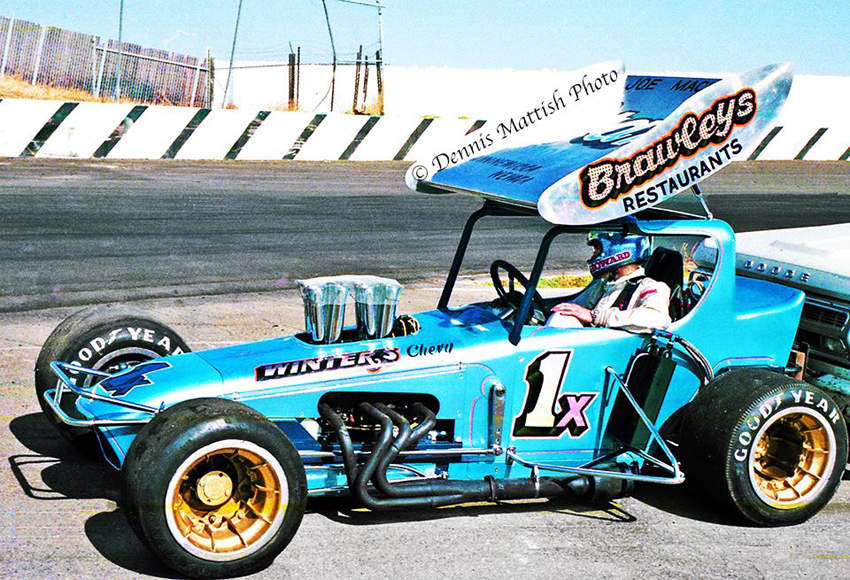
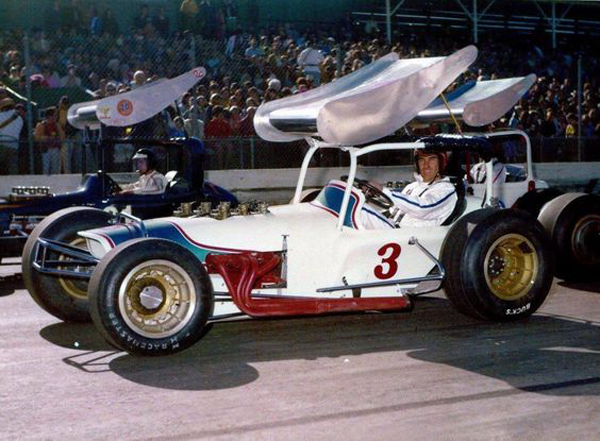
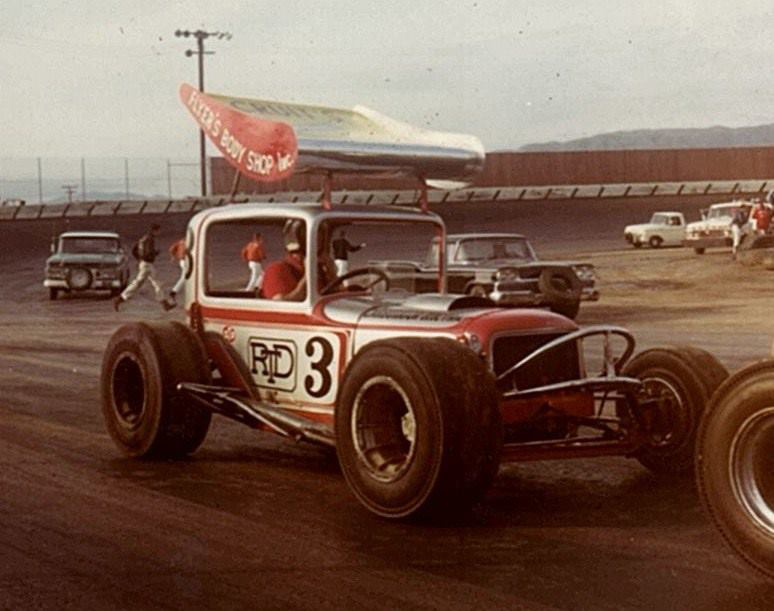

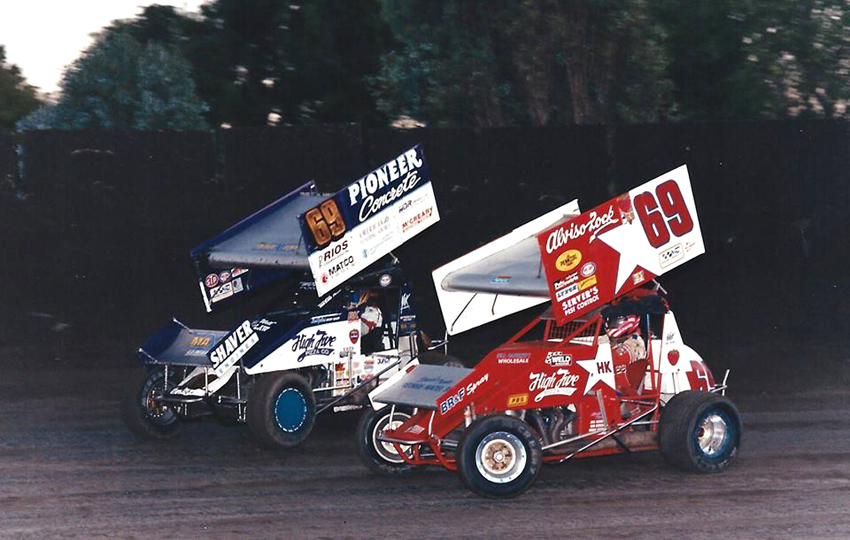
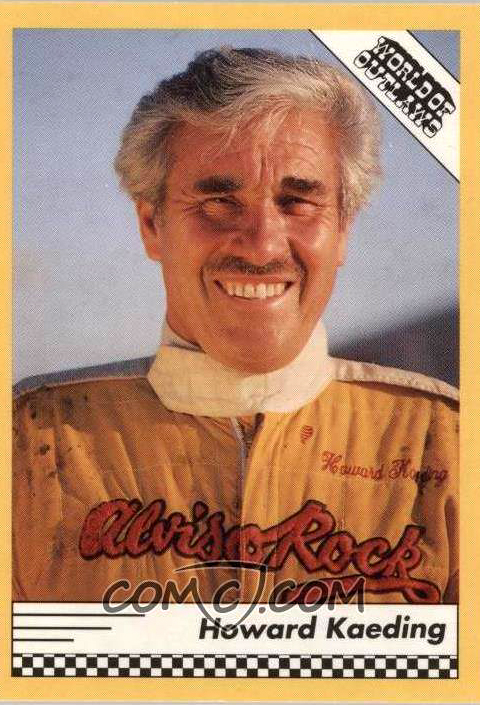
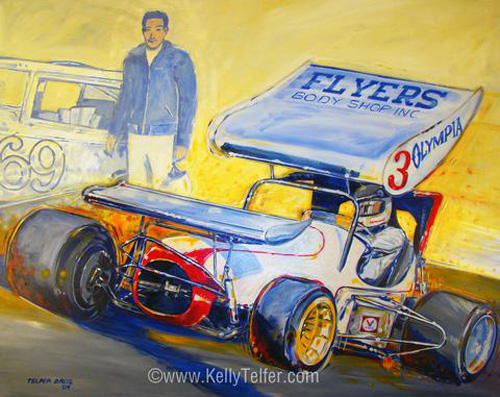
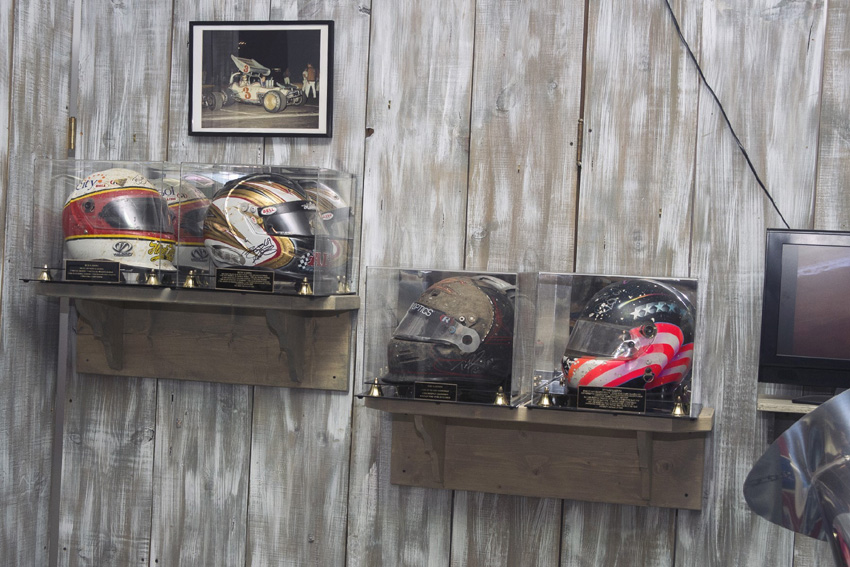
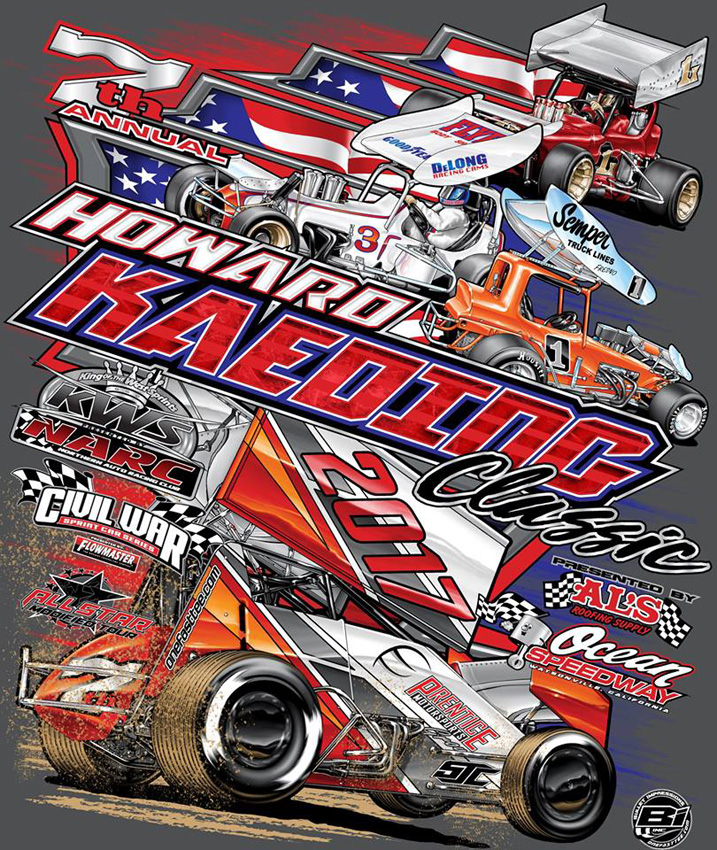

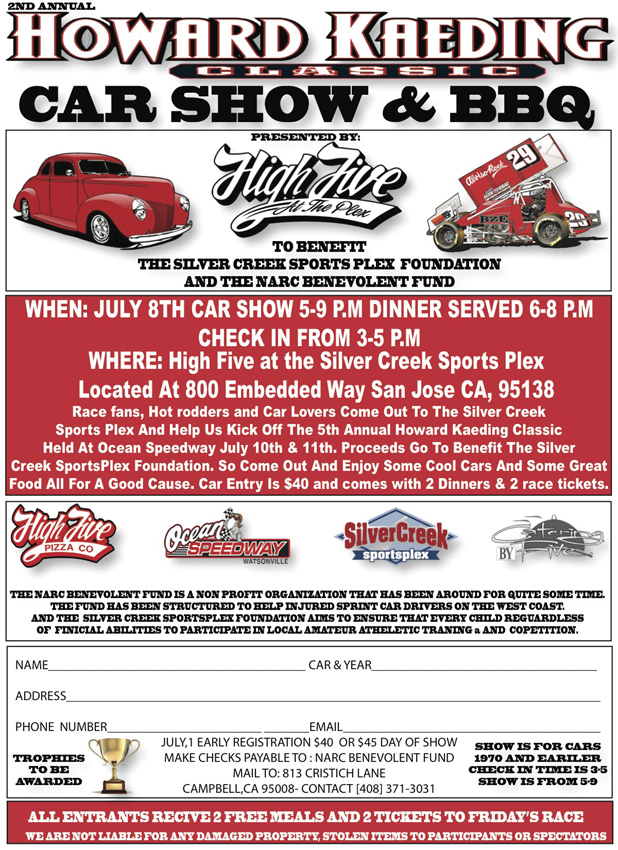
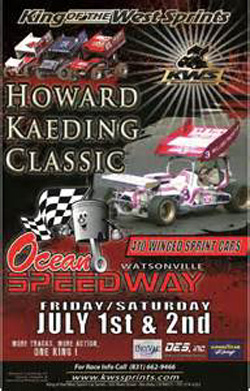
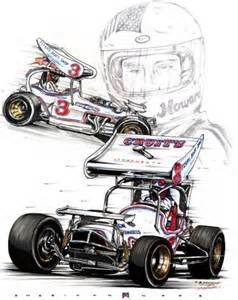
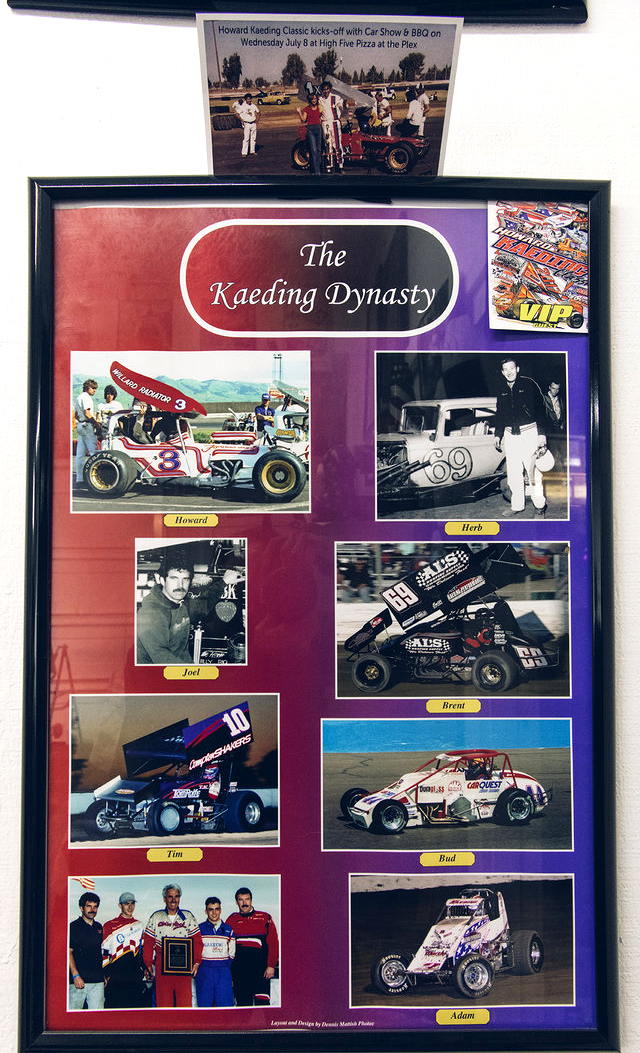
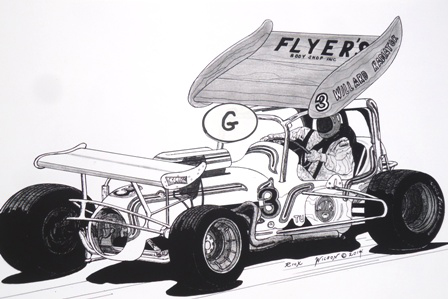
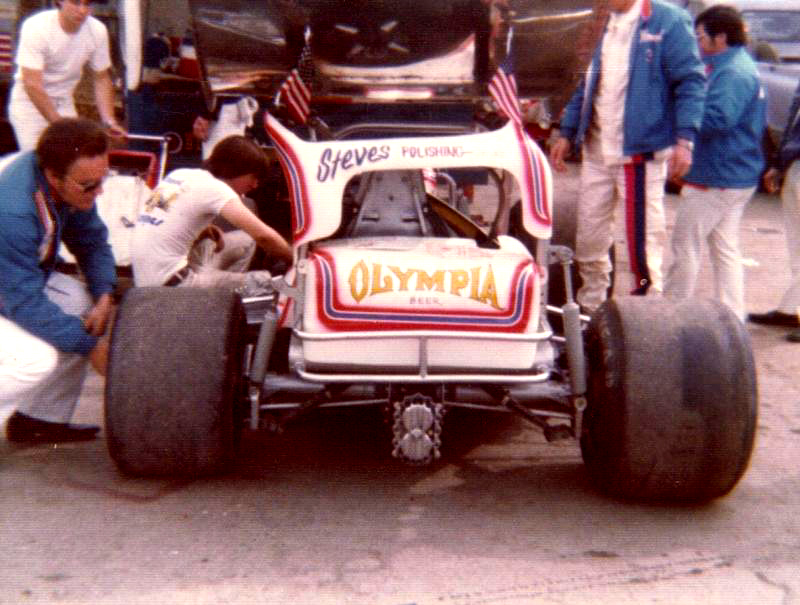
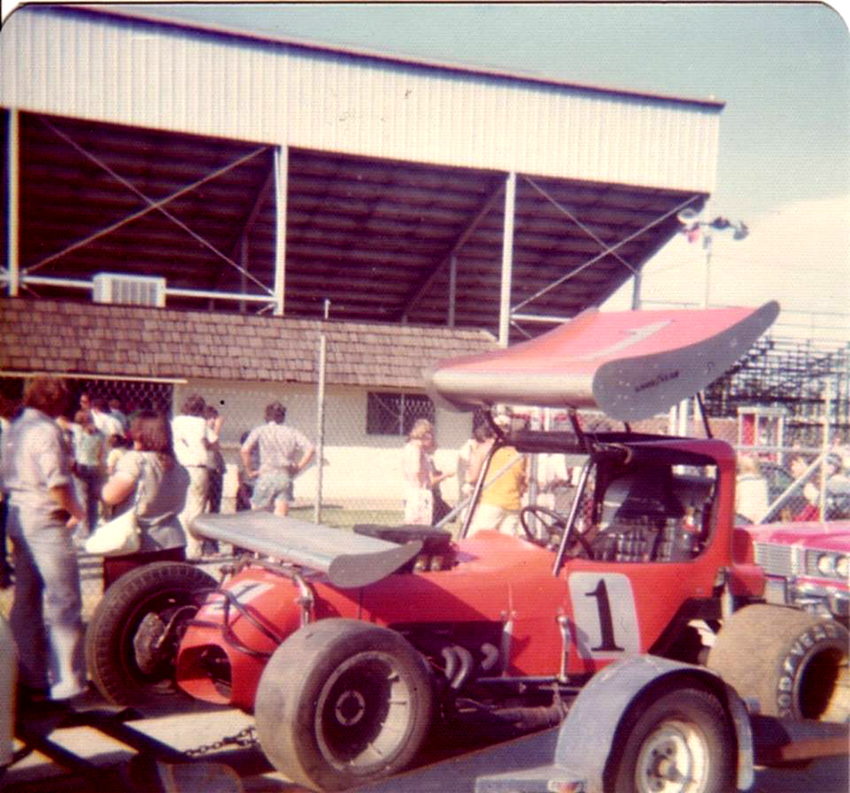
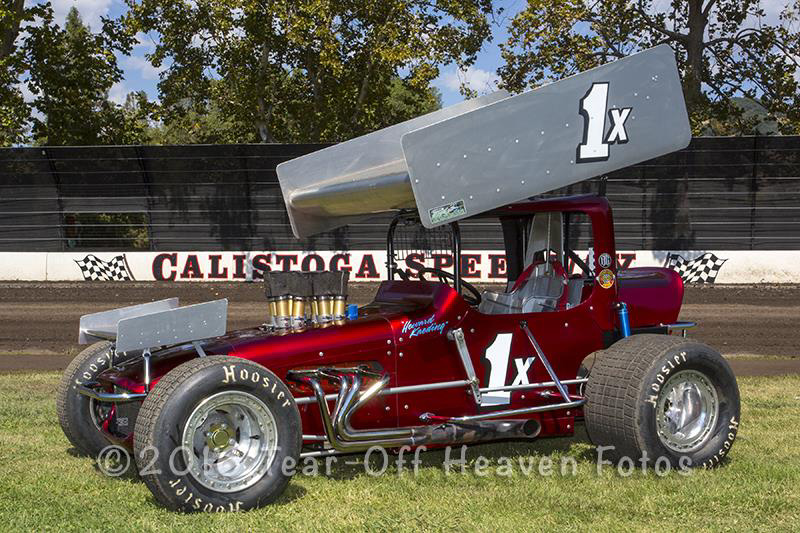
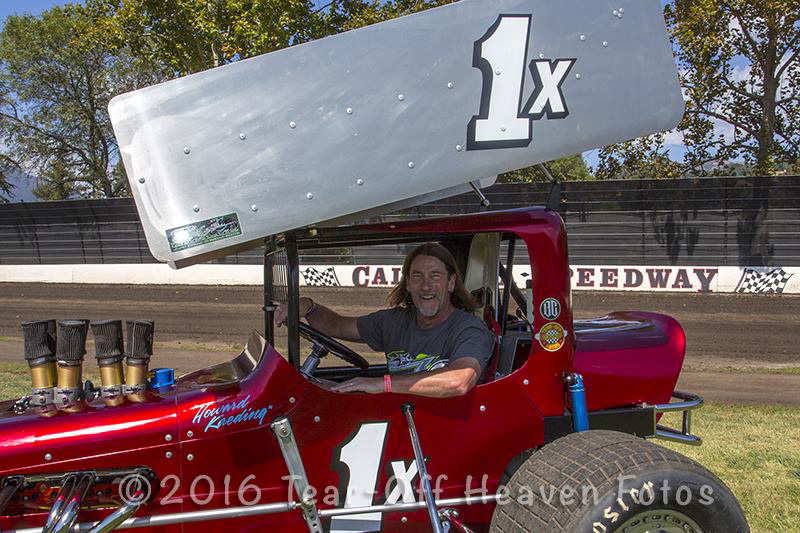
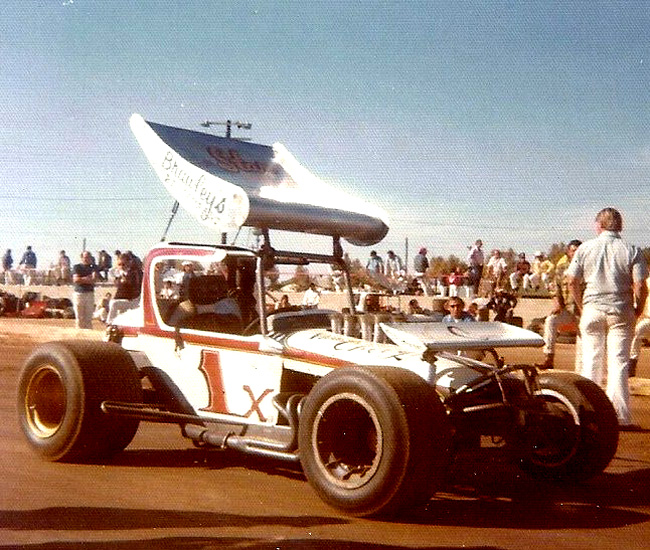
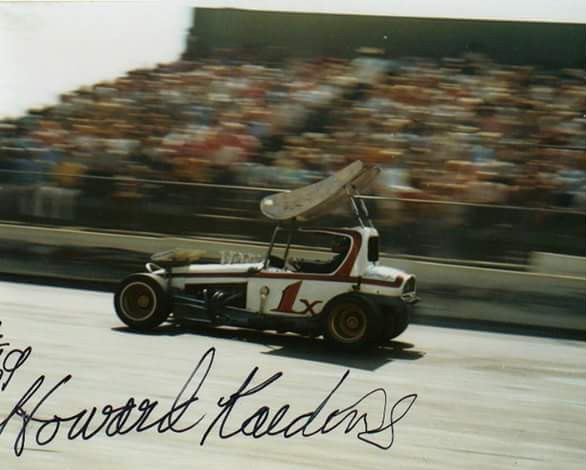
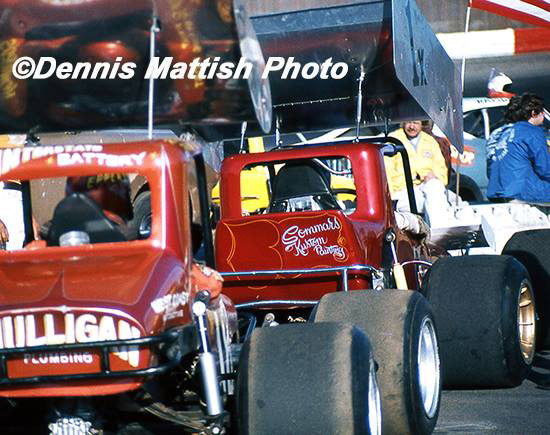
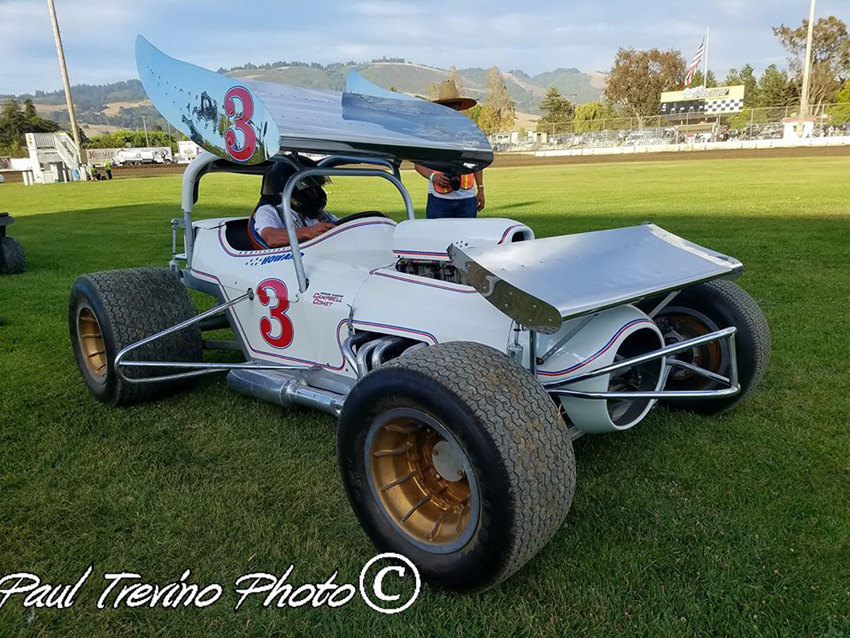
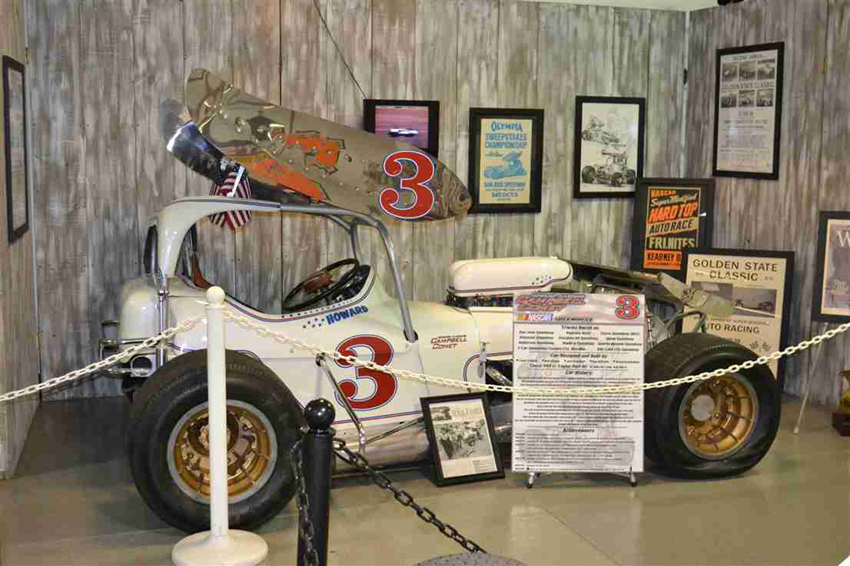
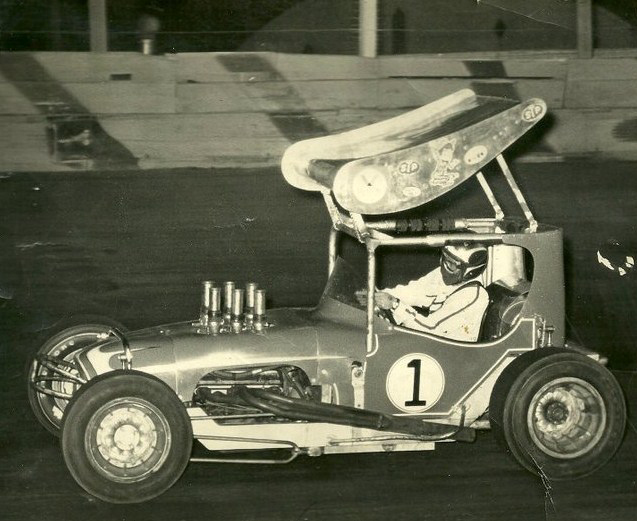
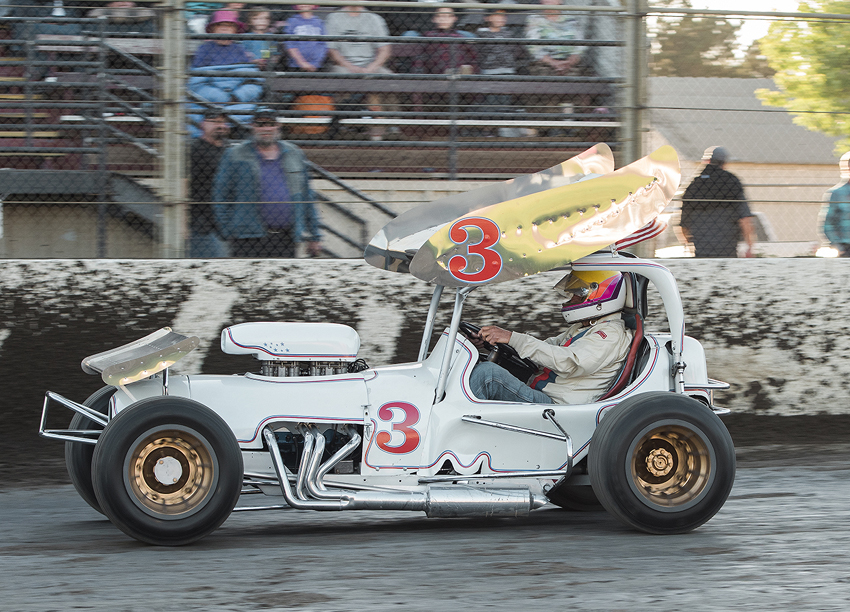
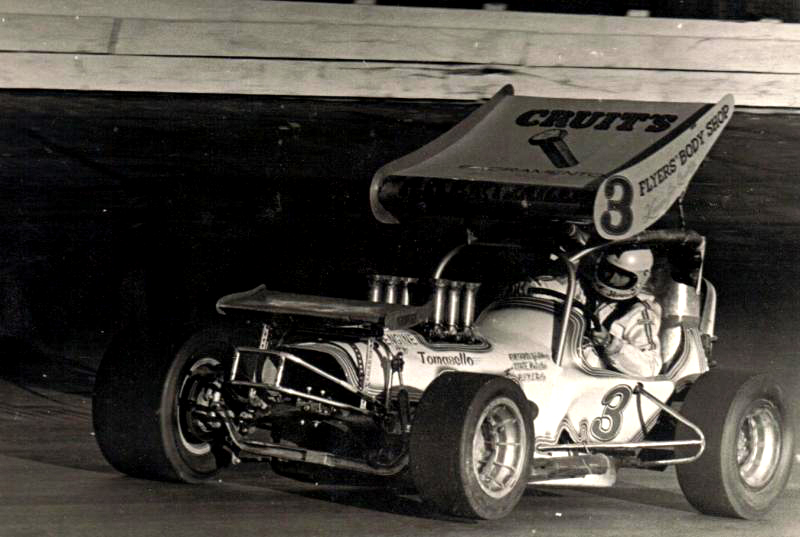
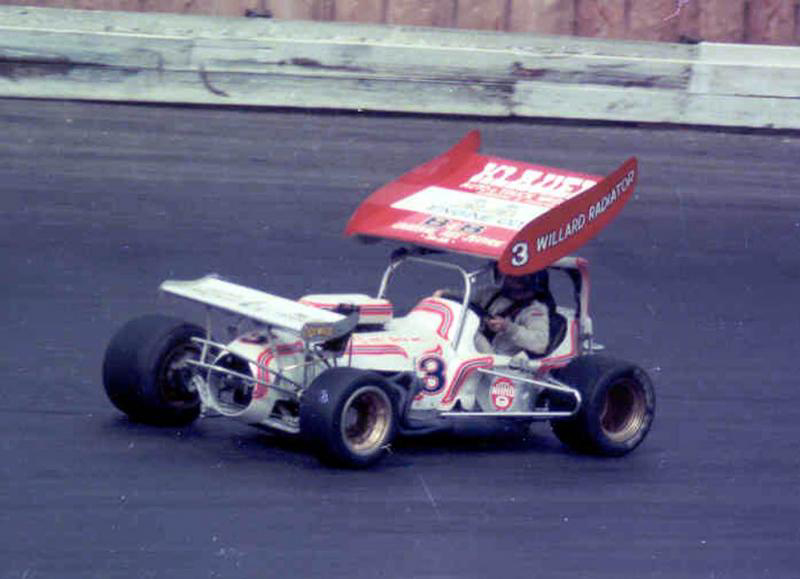
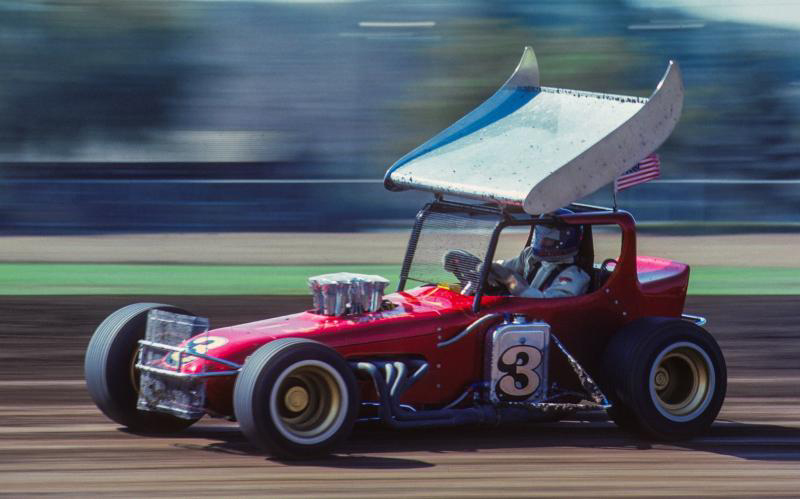
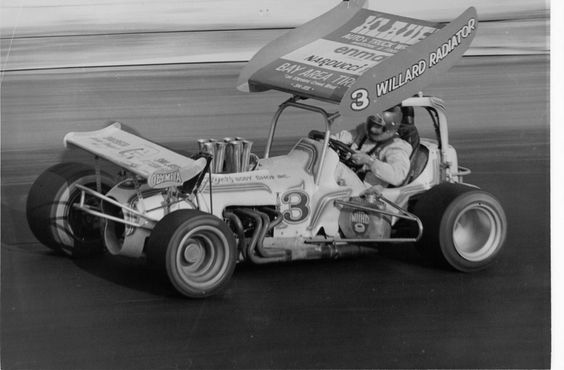
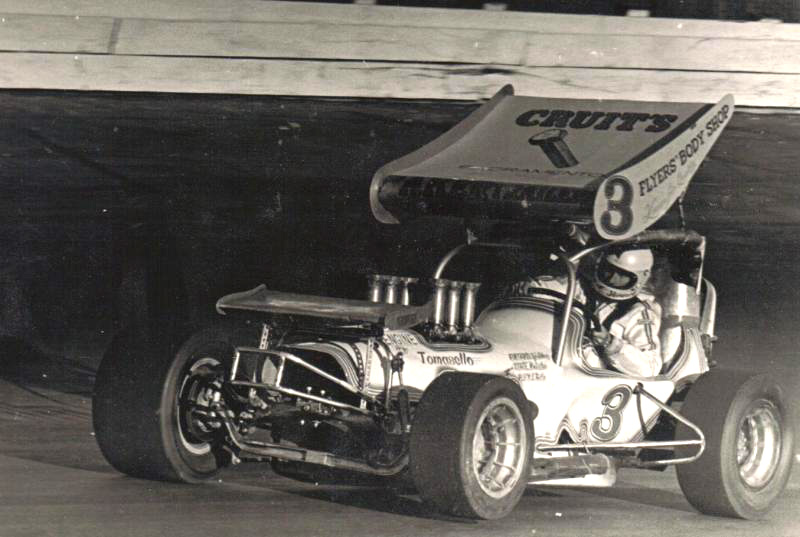
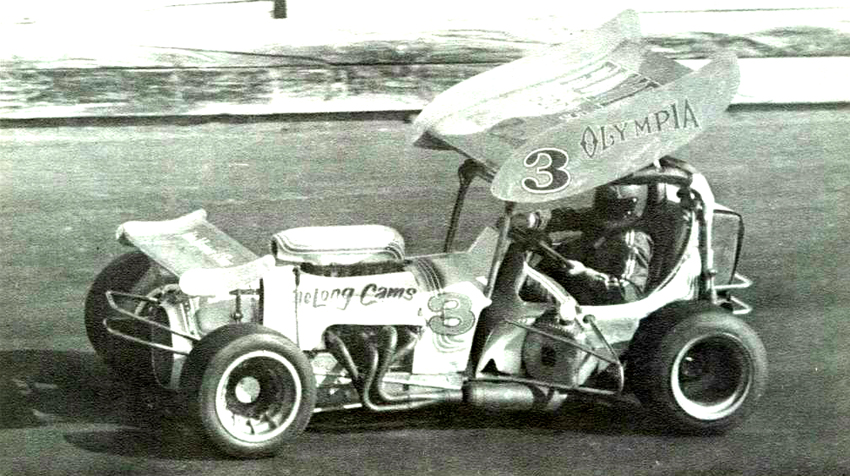

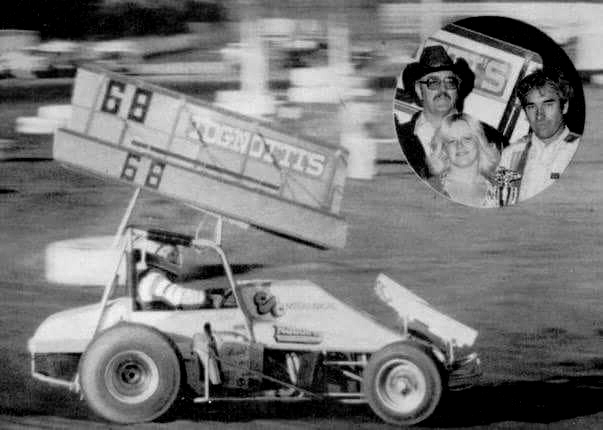
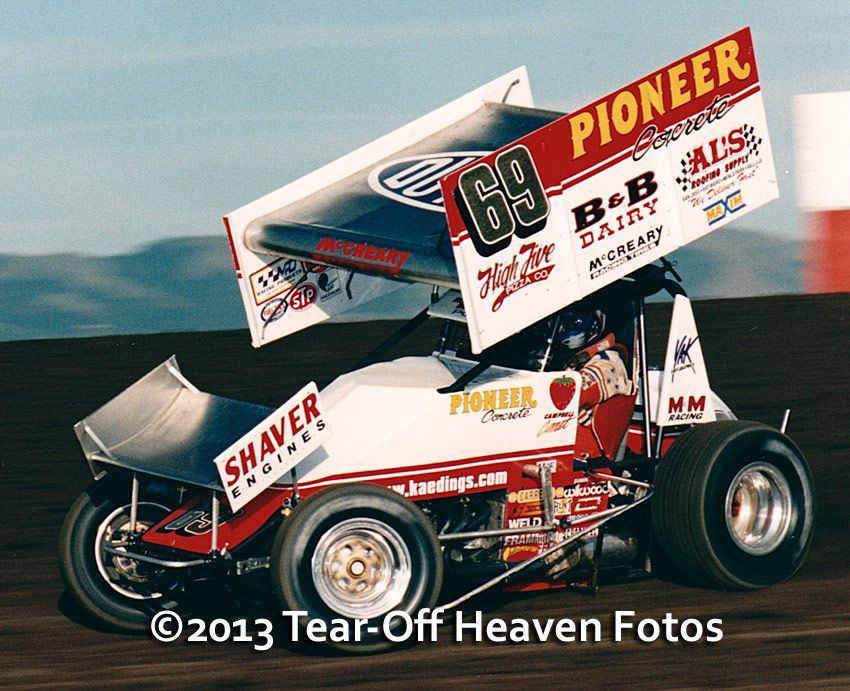
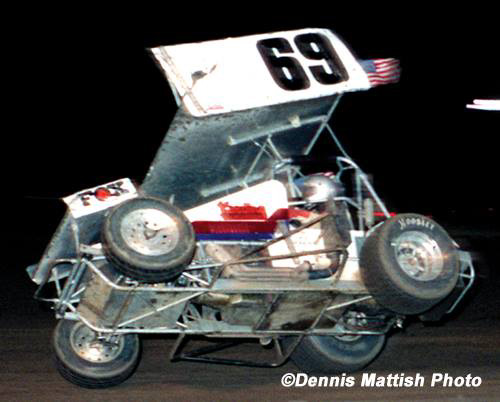
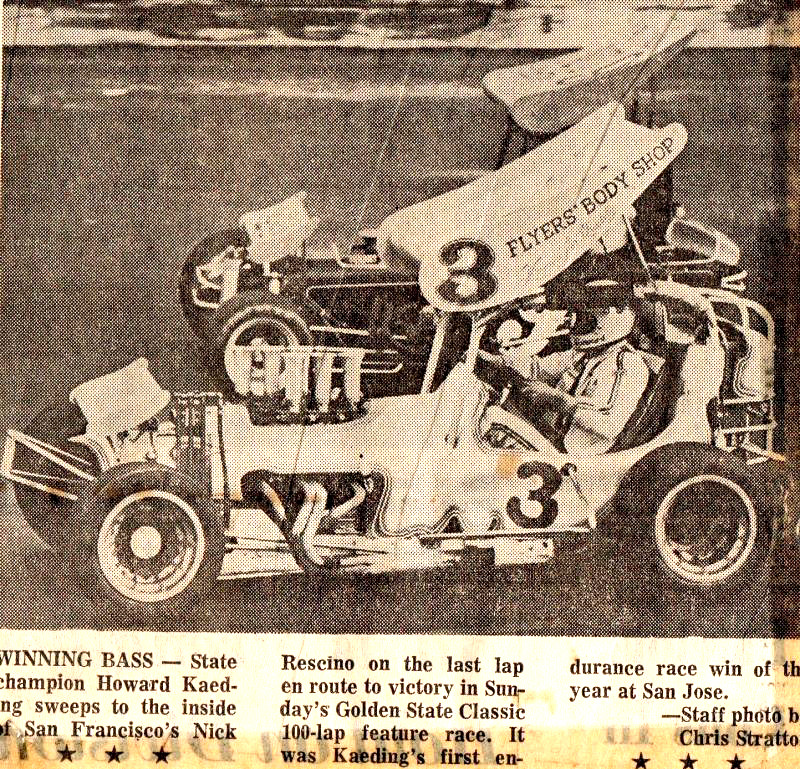
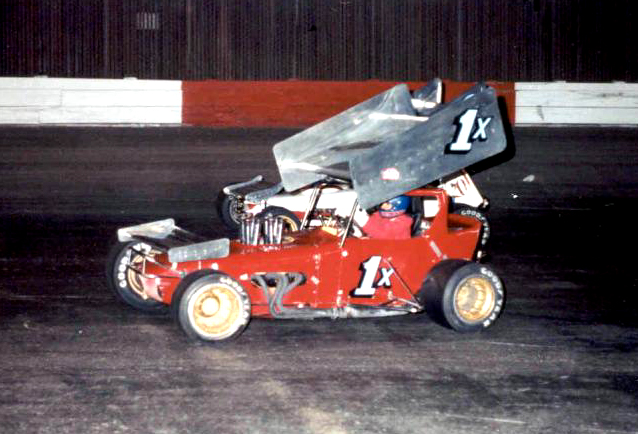
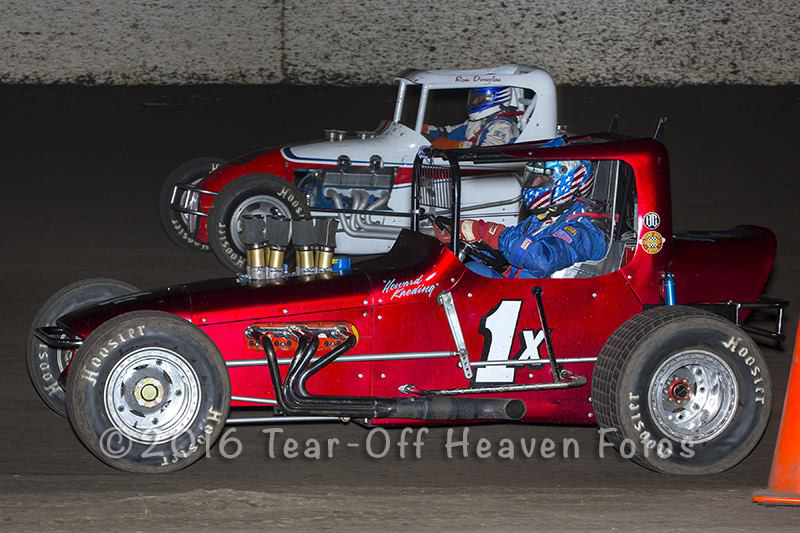
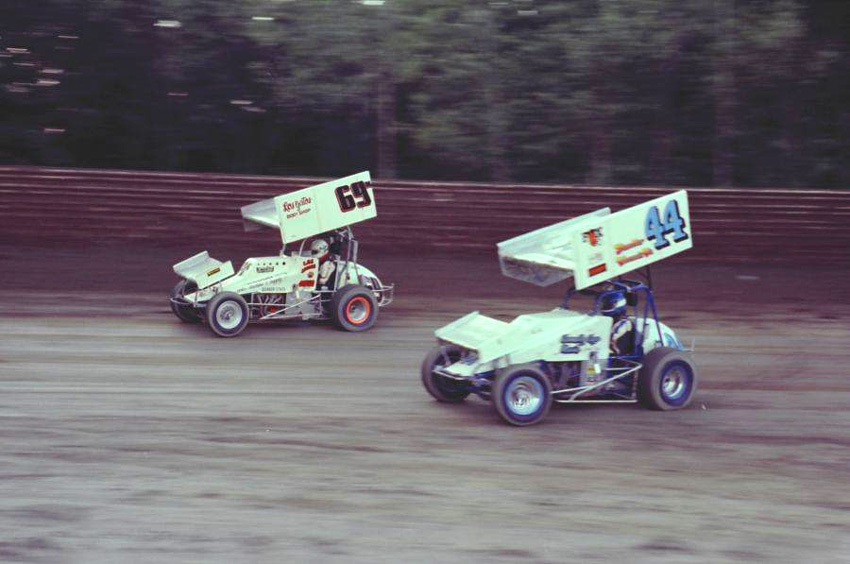
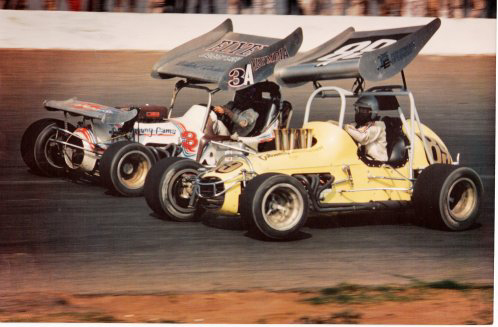
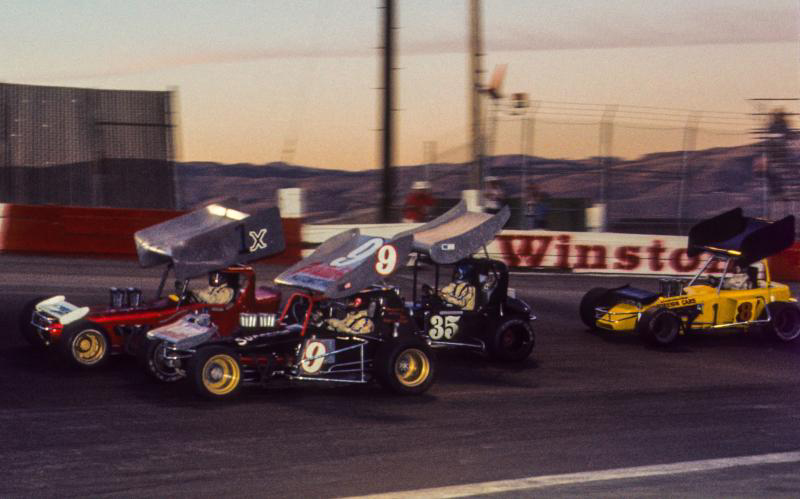
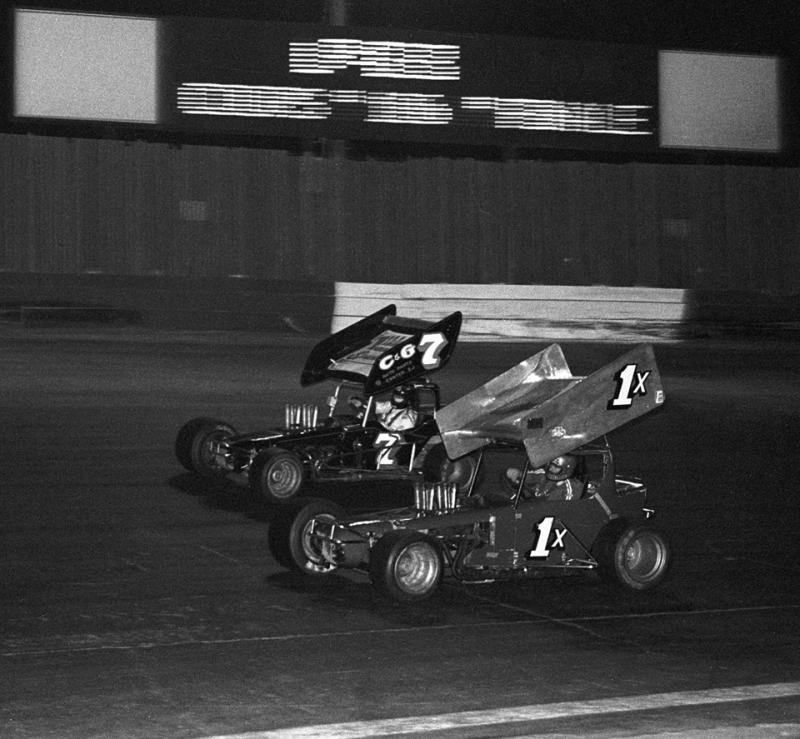

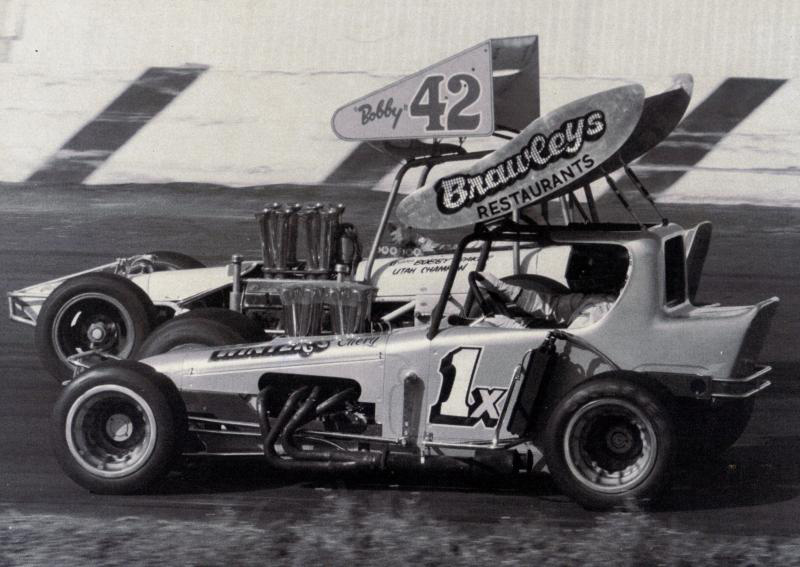
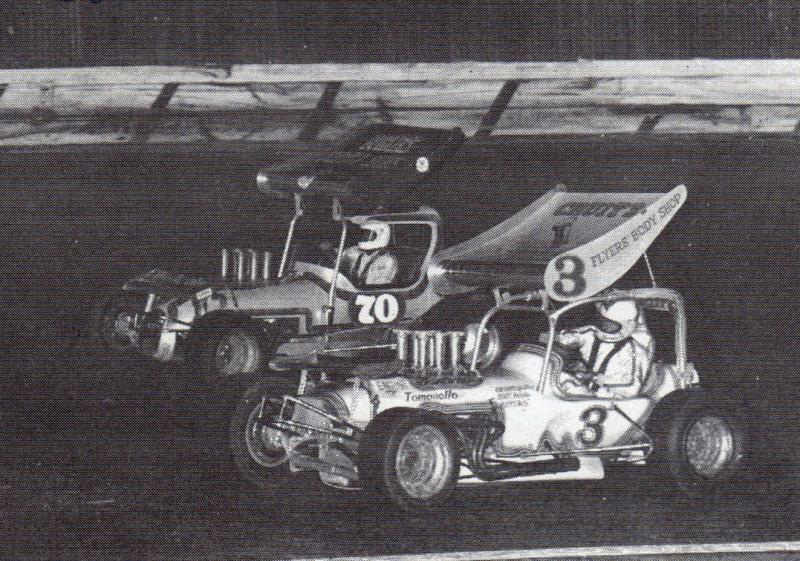
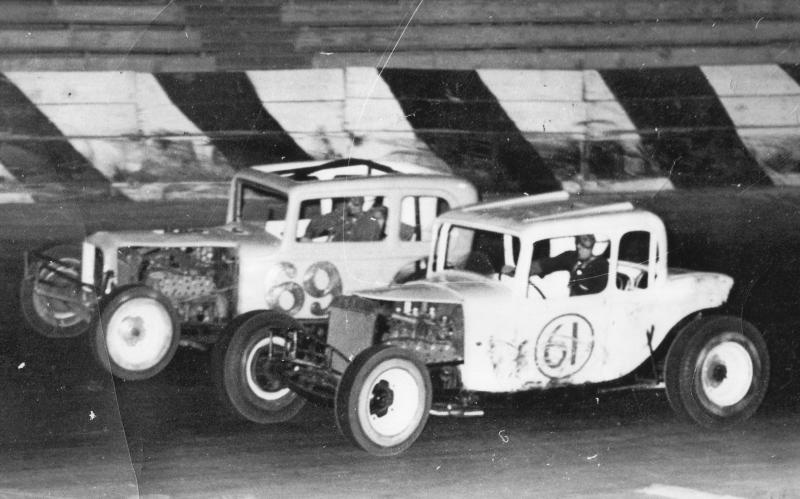
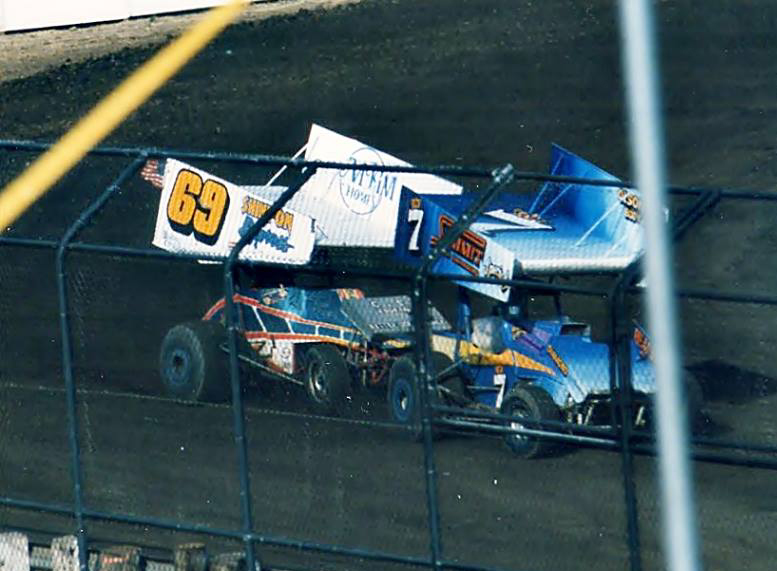
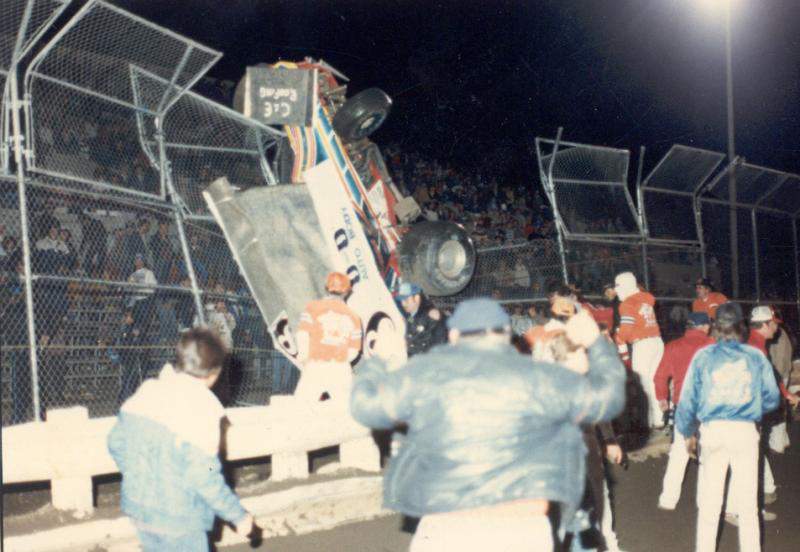
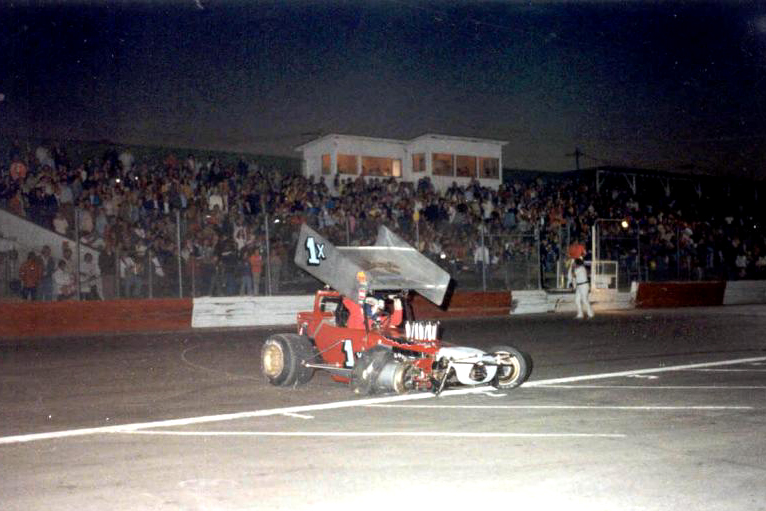
Howard was a 2 time San Jose champion with 114 main event wins at San Jose ahead of Al Pombos 84 and Marshall Sargebt's 80
nterview : Saroyan Humphrey
A steady rain is pelting the roof of Howard Kaeding’s office/shop/time capsule in Campbell, California. “I call it liquid sunshine,” he says with a chuckle. Kaeding, 85, is the first of three generations of California open-wheel racing champions and he’s standing in the middle of the room, next to his beautifully restored white number 3 super modified (originally built in 1969).
Kaeding is surrounded by a wide variety of mementos and artifacts from his childhood and 45-year short track racing career, including hundreds of framed photos, racing posters, helmets, trophies, and newspaper clippings, each with a unique story to tell. Driving his infamous number 3 during its eight-year reign at weekly tracks across Northern California, Nevada and Utah, Kaeding won over 125 main events, track championships and driving titles. He won the NASCAR Super Modified championship from 1970 to 1972
Next door is Kaeding Performance, the family’s renowned sprint car supply and racing warehouse. The elder Kaeding has been a part of the local landscape since 1937 when he and his family moved west from Nebraska. “There was a house over there and another here with nothing more than a field in between,” he says, overlooking today’s suburban sprawl and pointing to the far west and east. In his mind, he can still picture the wooden house trailer that his father built, and parked on the same property, surrounded by trees. “This is where I lived,” he says of where the shop stands today. Listening to him, you can almost see it.
Howard’s two sons, Brent and Joel grew up with racing. “They went to all my races,” Howard says. Brent is a 13-time NARC/King of the West sprint car champion and considered one of the best of all time. Joel is a specialty mechanic and former president of Kaeding Performance. Brent’s two sons, Tim and Bud, are in the middle of their sprint car racing careers, with mounting championships and victories. “We’re all hard chargers,” Howard says. “They (Brent, Tim and Bud) have all won a lot of races and I’ve done a lot in my career, but with my boys and grandsons, they’ve superseded me in their accomplishments. And that makes me happy.” The Kaeding racing legacy is known throughout the motorsports world and it has also been recognized by the city of Campbell. At the downtown historical museum, a tribute to local “record makers and barrier breakers” commemorates their accomplishments.
What brought your family to California? The Dust Bowl is what brought my family to California. Everybody says it was the depression that brought all the people from the midwest to California but it was the Dust Bowl and the drought. It killed the cattle, chickens and their pets and everything. The people were dying from the dust. My grandfather told my dad he needed to go someplace else and he (grandfather) had been a very successful farmer. He’d gone from the top to down on the bottom. So in 1938 we come out here from Nebraska in a ’29 Chevrolet. My dad with three kids. I was in the third grade and I was six. We slept under trees and behind bushes. My dad would get jobs at ranches and a lot of other different places. He was quite a handyman. And then in ’39 he became a carpenter at Fort Ord during the war effort. We lived out there for about a year. Then we came back to San Jose and all the big factories started making stuff for the war. That’s when all the men had a job and all the women were coming out of the woodwork and becoming welders and all kinds of things. It was the evolution of things, the birth of our nation at the time. But I was just a kid having a good time. I had no idea my dad was poor. As far as I knew, my dad was the richest guy on earth. My folks never had a completed house while I was at home. We lived in a house trailer that my dad built right here on this land (where the current Kaeding shop is located).
How do you remember Santa Clara Valley at that time? It was mainly orchards, or something to do with farming. Between Gilroy and Oakland there were probably two to three dozen processing plants: canneries for pickles, spinach, two or three Del Monte plants. Now it’s all electronics.
You and your brother Herb both raced; how did you get interested in racing? Well, me and my brother were always together but I was the one to first start with an actual race car. But we always raced on the streets in high school. ... I had a ’32 Ford and here in Campbell on Friday or Saturday night, that was the thing to do. We’d race down Campbell Avenue; back then it was all orchards and long farm roads. I also would drag race a motorcycle (1936 Harley Davidson) and Model A sedan at the old Belmont Drag Strip. I also raced at the Salinas Drag Strip. It was different back then; you just showed up and you did it, just like the street racing. There were no association fees or clubs to join. I just enjoyed it!
When I was working at Westinghouse (early ’50s) I knew a couple guys there that had hardtops and I used to go look at their cars. I said, one day I want to build one. I started with a ’37 Ford. I’d never been to a racetrack, never been to a race in my life and I went down there (San Jose Speedway), towed my car and it was a rain-out. So, we towed to Belmont on Wednesday night and raced, came back and just kept on doing it. When I signed up, my first race car number was 281: That’s how many cars were registered. You used to get your number based on points ...
Was Herb racing at the same time? My brother started racing about five or six years after I did. He used to help me on my cars some but he was married and had a family. He never went past the eighth grade, he went to work at Westinghouse, got married and had kids and a family. I was two years younger but way behind him in his progression in life. I was the first kid in my family that ever graduated from high school. It was a different time in the world , but we did a lot of great things together.
Who were some of your rivals early on? When I was on the track I always raced the guy that was in front of me. The tough guys that were hard to beat when I first started were Ray Raineri. I’d come home from the races and I’d get maybe second or third, or further back and my dad would say, ‘Huh, I see Raineri beat ya’ last night ...’ (laughs)
“…when the main event came up, if you were the point leader, you’d start in the back row and you’d make points for passing. It was exciting to watch… ”
Somebody I always remember, and he’s still a friend of mine today is Johnny Colendich. In 1955 Johnny won the (San Jose) track championship. About 10 years after that, I drove for his car owner, Don Brown. It was a black and checkerboard car. It was a modified. But I want to say that every time that I raced, it was a great time in my life, even the disasters. Every car owner I drove for, I had a great time. Every moment was the most important thing in my life at that moment.
When did you start racing super modifieds? You know, the super modifieds were just developed. You had the hardtops and every year the rules would change. You used to say that ‘last year’s cheaters wrote this year’s rules.’ With the 3 car, it was my creation. I built it in ’69 and raced it for about eight years. It was my thought that I wanted it to look like a dirt Champ car and our group of people built it.
What innovation did you bring to your super modified? One of the big things that helped me do good in this car was a steering box that I come up with along with another guy who worked at Bob Sykes Dodge. He told me to buy a steering box that come out of a Dodge police car. It was the same steering box that another guy from Fresno was using in NASCAR—and he had won at Riverside. So, I was talking to him, and I learned about the Daytona 500 “speed up kit” and so I ordered it. Richard Petty was using it first so we figured we could buy whatever he had left over. (laughs)
You were the most successful driver in San Jose Speedway’s history… Yeah, somebody showed me because I never kept record of it, but I think it was like 121 main event wins. Races are won by luck and technology and skill of the driver… and when we raced the 3 car I had everything going for me. And there were some others, Pete Winter’s car was another one; we had a lot of success. And in this period when this car was built, a lot of things (technology) changed quickly. (Nick) Rescino copied this car to some degree. During this time I would drive other cars, too. I drove for Flyer (Tabata), Triguerio Brothers and Bohner’s Boats. I was also driving at Kearney Bowl (in Fresno) with Al Jorgenson out of Sanger. I probably drove for 12 different car owners and probably about half of those guys I drove for about six-10 years.
…and you won 17 in a row. Yes, and I actually won 23 races in a row, but they were not all in that car (3). Back then we used to start in the back row. The top point leaders would always start in the back and you transferred in the heat races, but you could end up last in the heat race. But when the main event came up, if you were the point leader, you’d start in the back row and you’d make points for passing. It was exciting to watch ... and did we have good crowds!
Did you have aspirations to go racing on a national level? I was never very smart or savvy about the outer world out there as you go along in life. Just like I’d never been to San Jose Speedway until I went there with a car because it cost money to get in. I just had a different outlook on the world. When my dad took us into a restaurant we got a milkshake or a piece of pie, or hotcakes and coffee was a nickel. And he had trouble paying for that—it was a different world for me.
Tell me about the history of the Kaeding shop; how did it progress over the years? For me, it started early on with my dad doing his own valve jobs by hand and me helping and learning along the way… and to my first car where my dad taught me how to file rod caps. We were working out of that house trailer that my dad built. It slowly built into a bunch of different stuff. In the early ’60s, we, my brother and I, started doing (widening) our own wheels and sold a couple. The stock car guys would come up from Watsonville and we’d put the steel plate in with their (bolt) pattern. We used to just weld those in the wheels. Most of all the welding was done on the wheels by my brother. I used to pay him $5 per wheel. It was a side job for him. We sold the wheels for $25. And the extra dollars I’d stick into a kitty to build a motor and when we got enough I built this 302-cubic-inch flathead for open comp at the end of the year. We’d also straighten frames. I built a homemade jig and charged 40 or 50 bucks to straighten it out. It was all Okie Joe stuff, but it worked and a guy didn’t have to rebuild a new car.
I was always into wanting to build something. ... We tore down buildings and the shop was built out of an old barn we tore down in Santa Clara. We’d pull all the nails out and use the boards ... and even my first shop was built that way. It was just an evolution from doing valve jobs to tuneups. And at one time, I probably had 20 alcohol salesmen as customers; they sold alcohol to liquor stores. I’d change their oil, do brake jobs. I’d do a brake job for $25 and they’d pay for all the parts. I’d usually rebuild, or put all new master cylinders and get the drums turned. That’s back when I was making $50 per week and the $25 on Saturday was nice. This was in the ‘50s, while we were racing.
And the evolution continued; we kept making money but I never took money out of the shop. I always bought a piece of equipment, and my racing was part of the shop fund, too. I always kept a full-time job my whole life and I just signed my paychecks over to my wife. I always kept a job until I retired at 55 and we continued at the shop. We were doing engine balancing and we had a dyno. And just before the fire (in 2005) we had just bought a valve head machine and went in debt $250,000. We never got to use it for very long but we paid for it for a long time.
We just did everything one piece at a time, over a long period of time. From the balance machine that I bought to the Bridgeport and another lathe, after the old wheel lathe. It all happened very slowly, like watching grass grow. Just one piece at a time. I built my own hot tank and later I built my own jet cleaner. I looked at the new ones on the market and built one ‘cause I didn’t have the money to buy a new one. I made a sketch and went to a sheet metal shop and welded it all together down here at night. Everything was built a piece at a time, you know. When we had money, or a nickel, we just moved along and slowly kept going.
What do you remember about the fire at the shop? We had the fire in 2005 and we lost the entire building and half of another. Nothing in the shop survived. You see, we reported the fire—it was a grass fire from the freeway (CA-17). The fire truck came right down here to the street, drove right by our place and come back around on Hamilton Avenue and by that time we were really invaded and they were having a hard time holding it back. I think Joel came and told me, ‘Dad, we can see the flames start to come up…!’
How long did it take you to rebuild? It took us over a year, but a day after the fire we moved in here (Howard’s office) and opened this as a business for the next year and a half and put all of my stuff in storage. A lot of our suppliers came here and helped us, too. I still get goosebumps thinking about this, but we had a hundred people here to help us during the first week or so … it was racers, friends, relatives. John Bickford (Jeff Gordon’s stepfather), he ran a machine shop that built sprint car parts and we were one of his biggest sellers; he showed up here with about four people to help. ...
And things just progressed; the world changed. My boys were always my partners, you know, so after the fire we had 50 years and it was all in ashes ... every machine we owned, it was three or four times the price to rebuy.
But the business has really grown since and that’s a tribute to Brent and Brian (Matherly, general manager) and everybody else in the shop. Billy (Foland) has been there the longest, probably 17 years. Brent’s the one who has really made it happen over the last 10-12 years. Sometimes when you go in the shop, they’ll have four or five (sprint) cars in there. This year there were probably five cars built in this shop. Brent built complete cars for some Australians. They come over here and just fired ‘em up and went racing across the country ...
How much are you involved at the shop these days? I do very little. The last year, I’ve been tapering out but I was always the go-for guy. Pick up and drop things off is all I do now. But I’ve been doing less and less. I figure I help ‘em when I stay away (laughs).
You raced until you were 65; what made you retire? I was very fortunate. In my last 10 years, I drove for Alviso Rock. He still backs Bud today. I stepped out of the car and let Bud drive it for a couple of races later on in my days and he was doing as good as I was doing. And, I just wasn’t as competitive as I’d like to be. Probably when I started thinking about retiring (from driving) and stuff was when we’d have grudge races at San Jose and I used to race against Brent. I’d maybe win one of them and then when it got to where I wasn’t winning anymore, I started thinking maybe I ought to retire (laughs). It didn’t make me unhappy, I always want my kids to win; you just lose the edge. You have to have that instinct, like a good football player; every tackle he makes, he has to go in for the kill. When the players stop going in for the kill, that’s when the other team starts winning. You can see the shift in a ballgame.
What were some of your proudest successes, besides the championships? I think my biggest success in racing has been that at the end of my racing career—and my racing career is still going on—as far as I’m concerned, are the great relationships I’ve had with all the good people and great guys that I drove for. All of the effort that a lot of people made for the love and glory of being involved in racing. Back in the early days, nobody got paid for working on the cars. It was all for love and glory, sort of like the street racers. I have a lot of great friendships today because of racing.
Updated 12/6/18


|

|

|

|

|

|

|

|

|

|

|

|

|

|